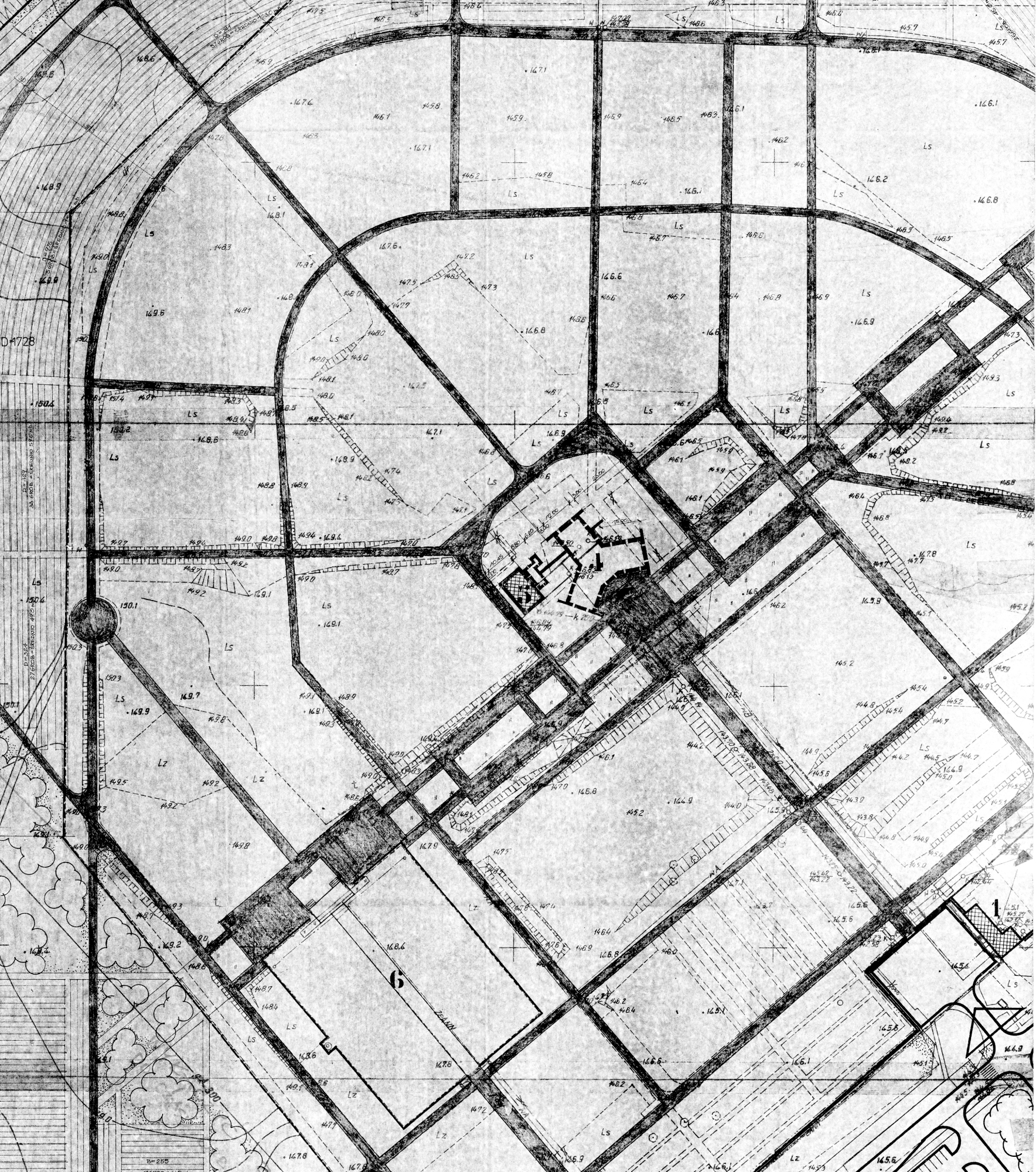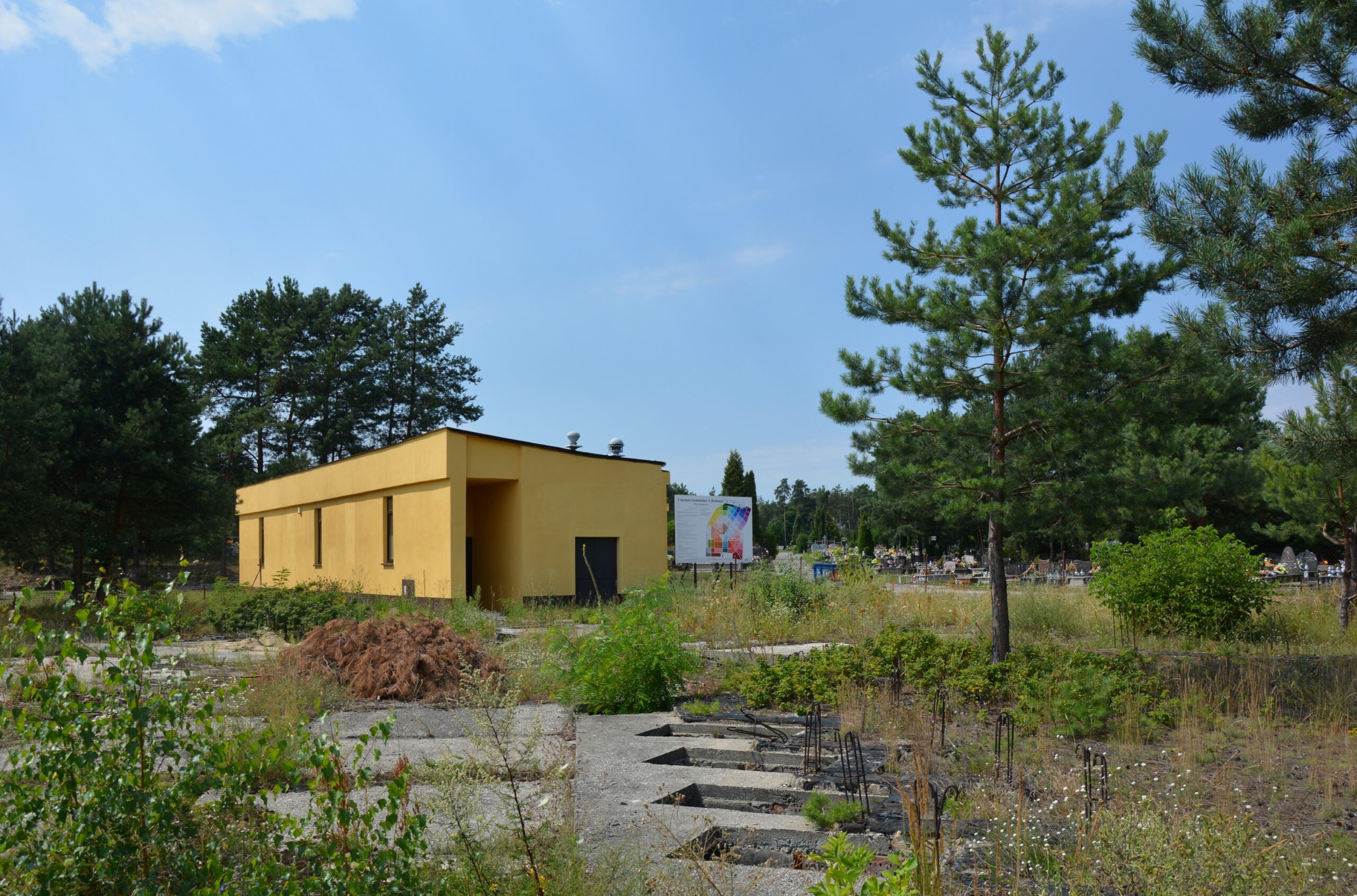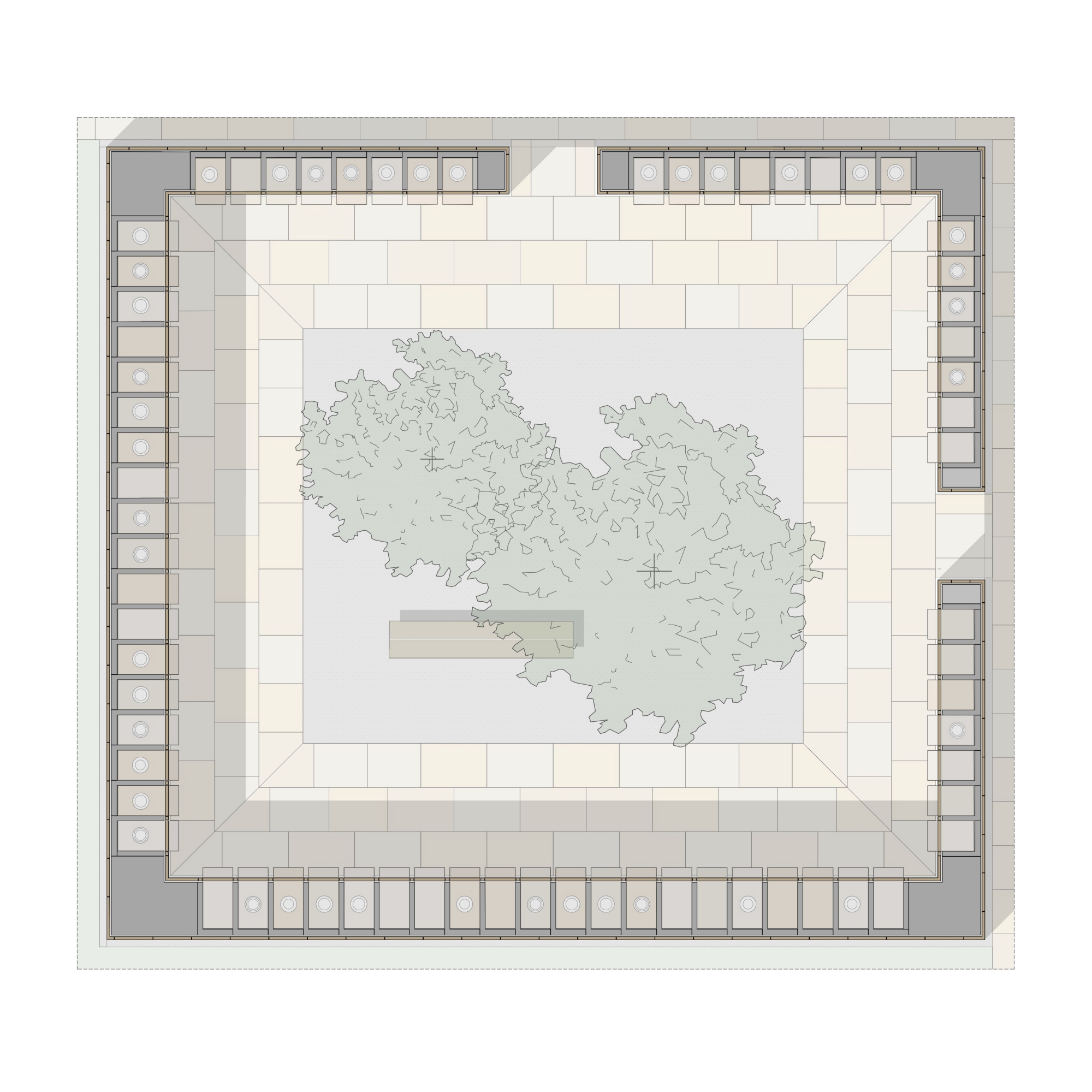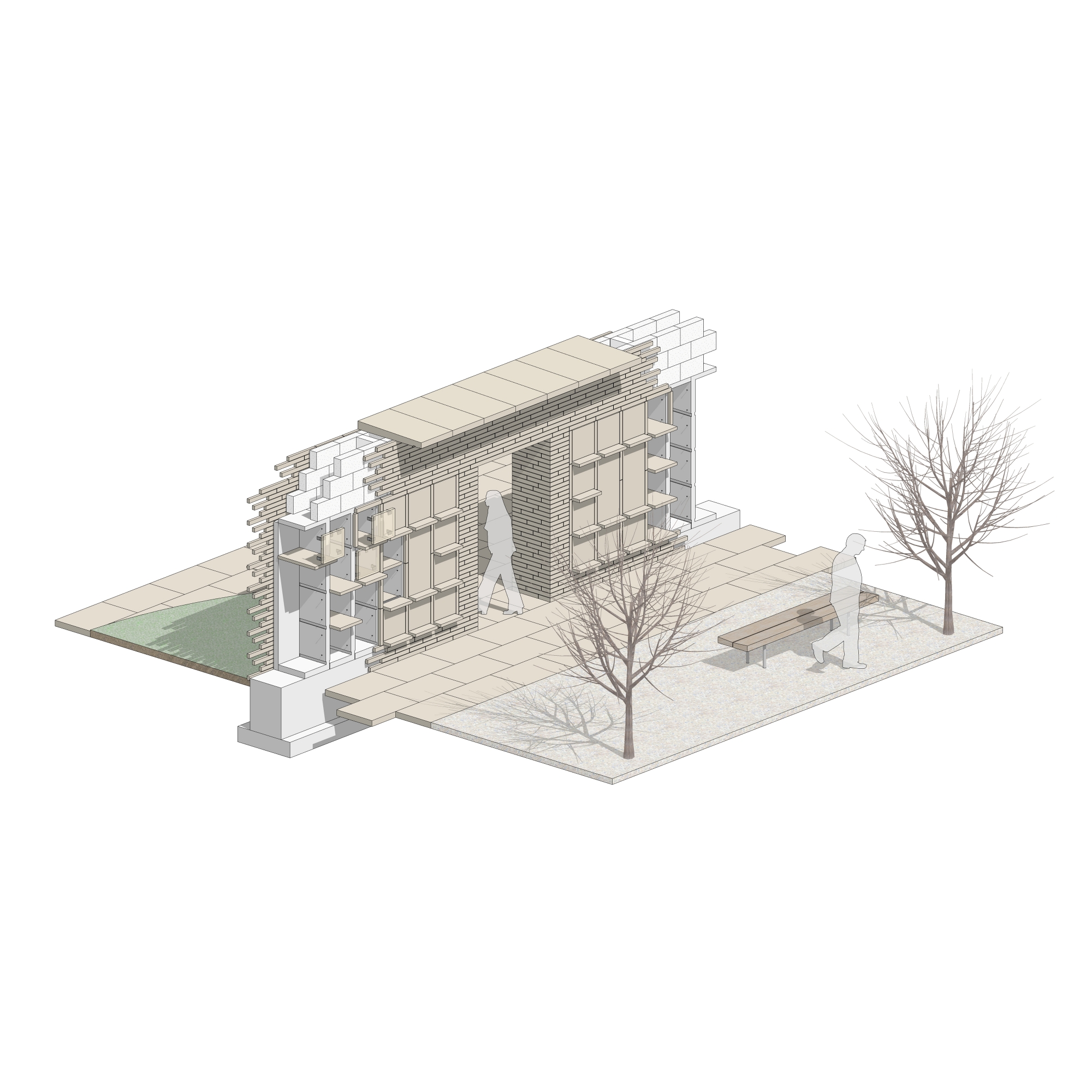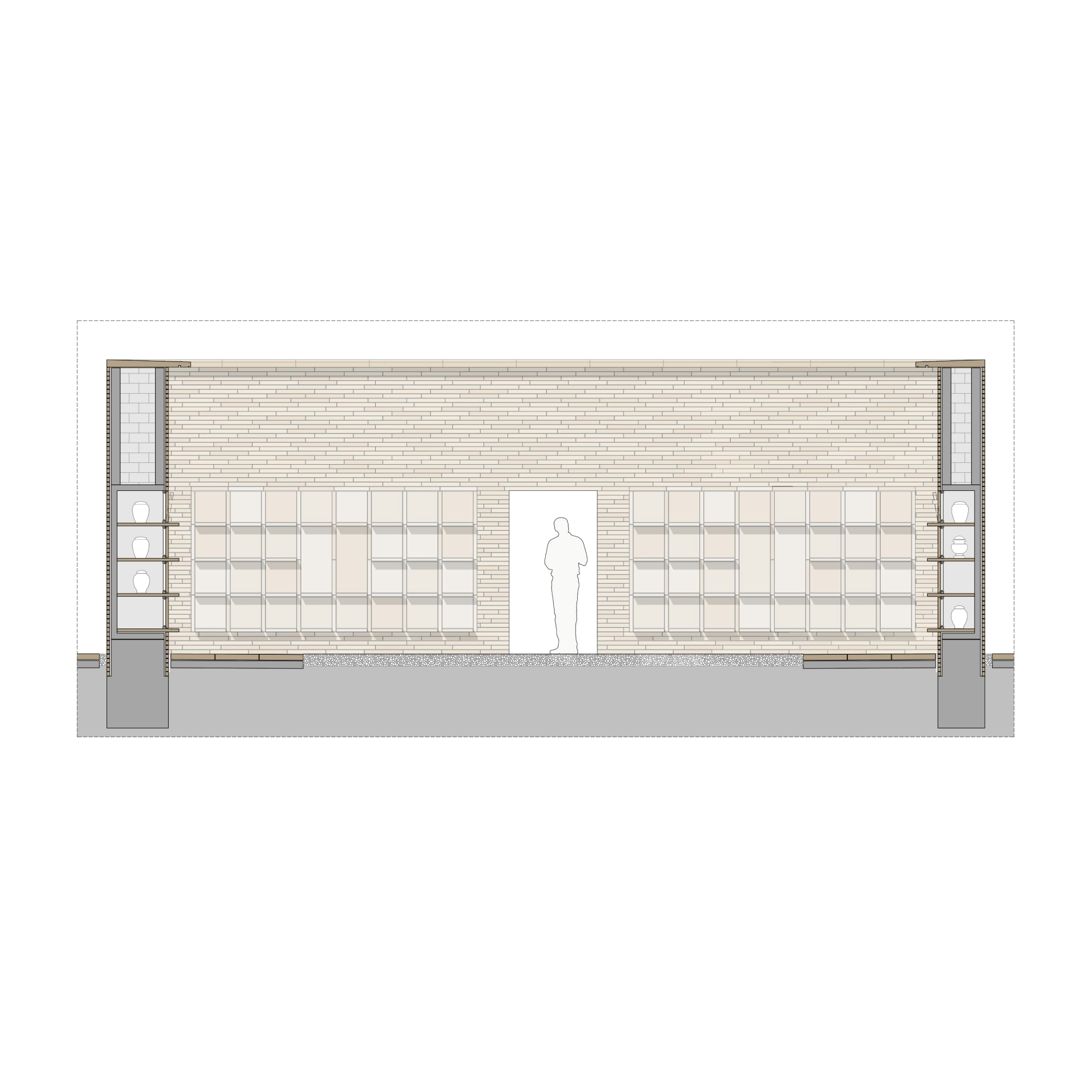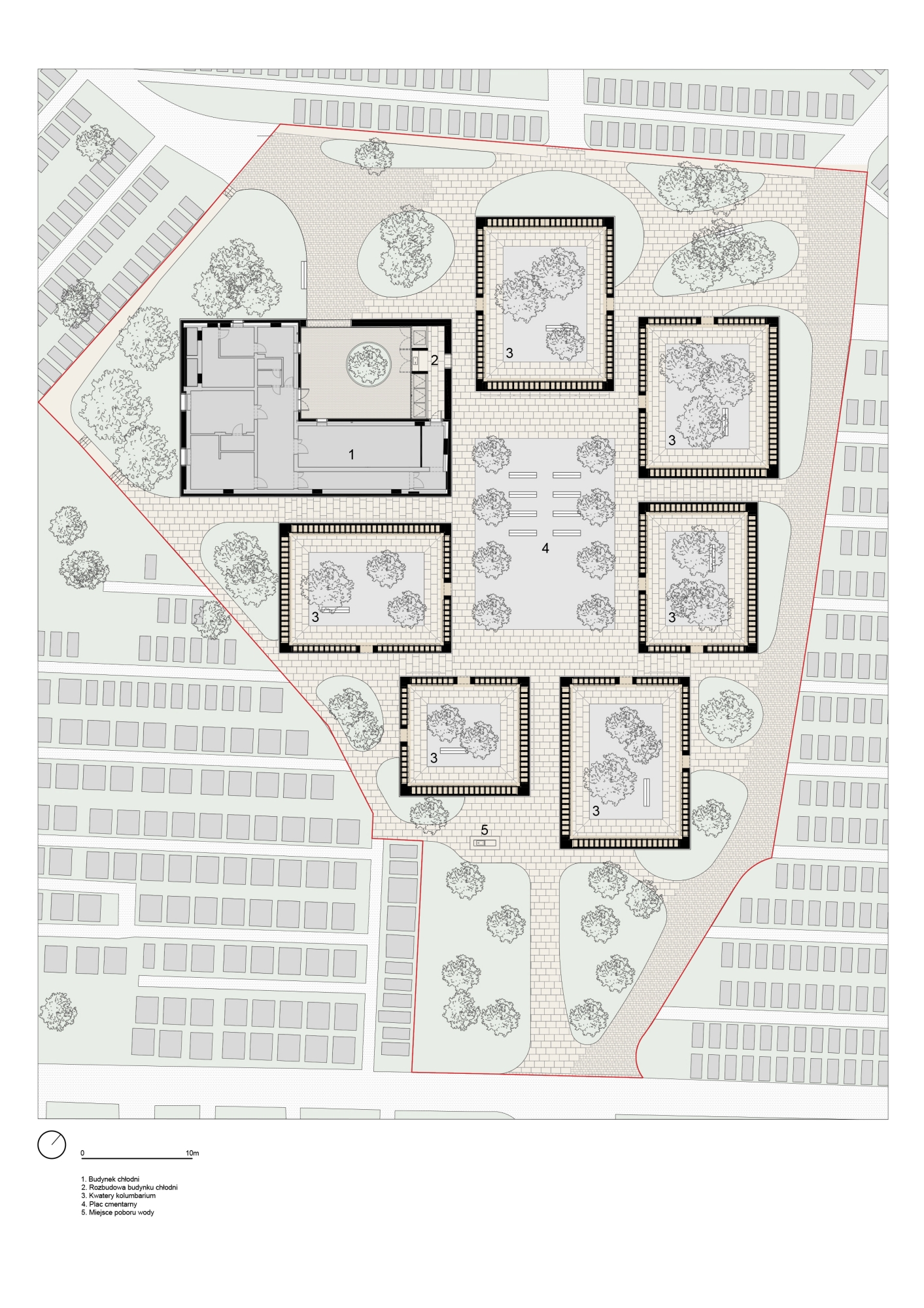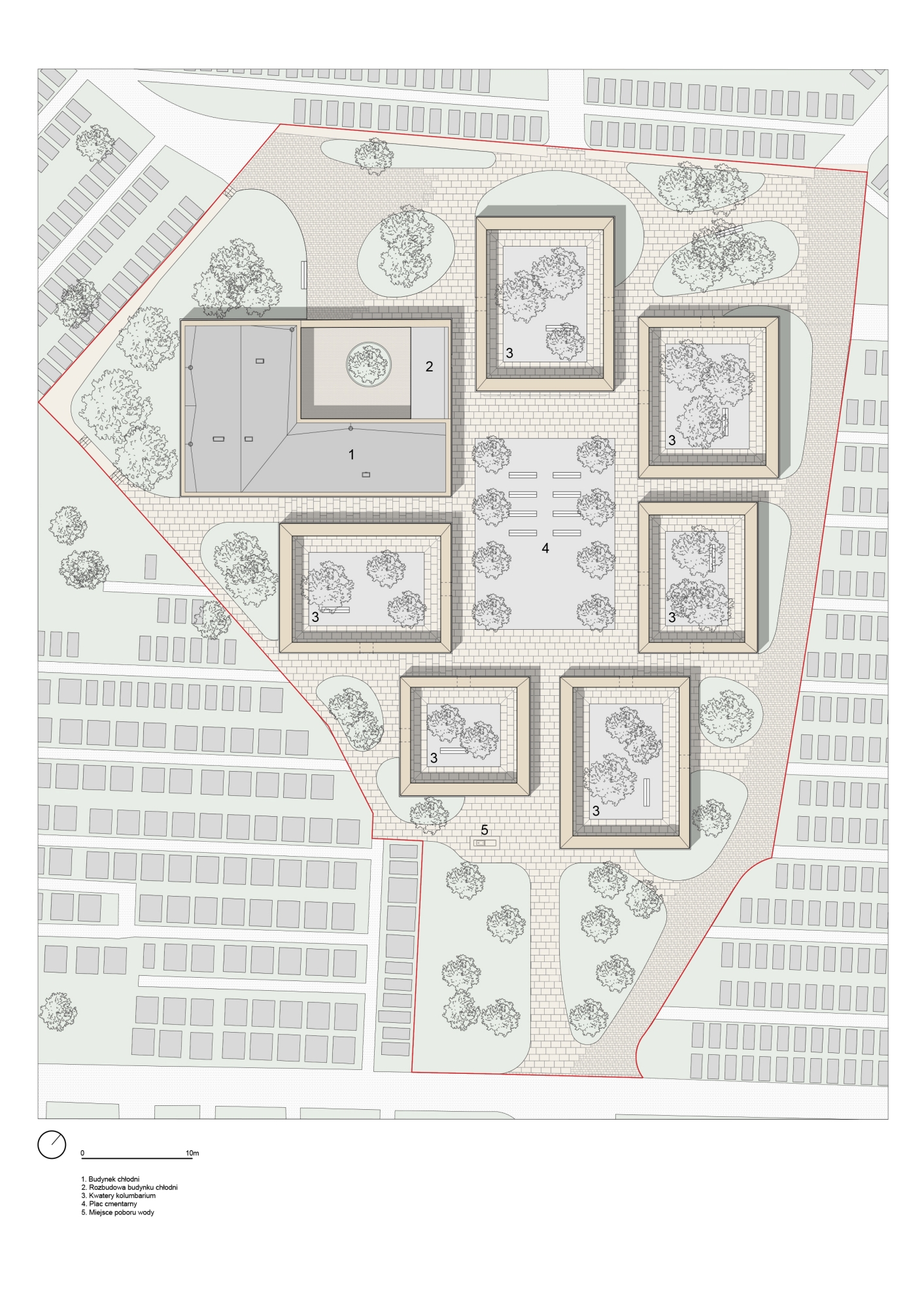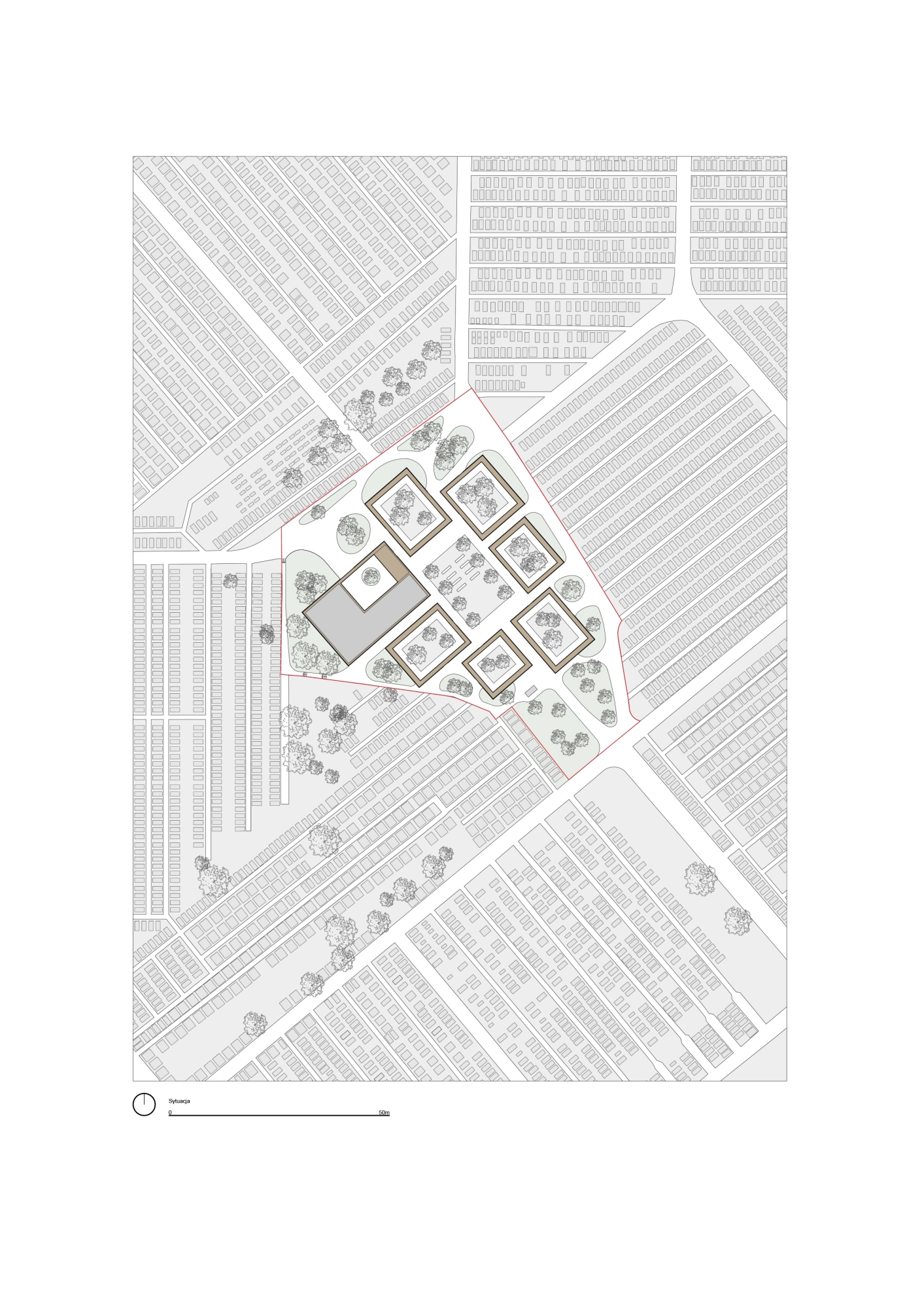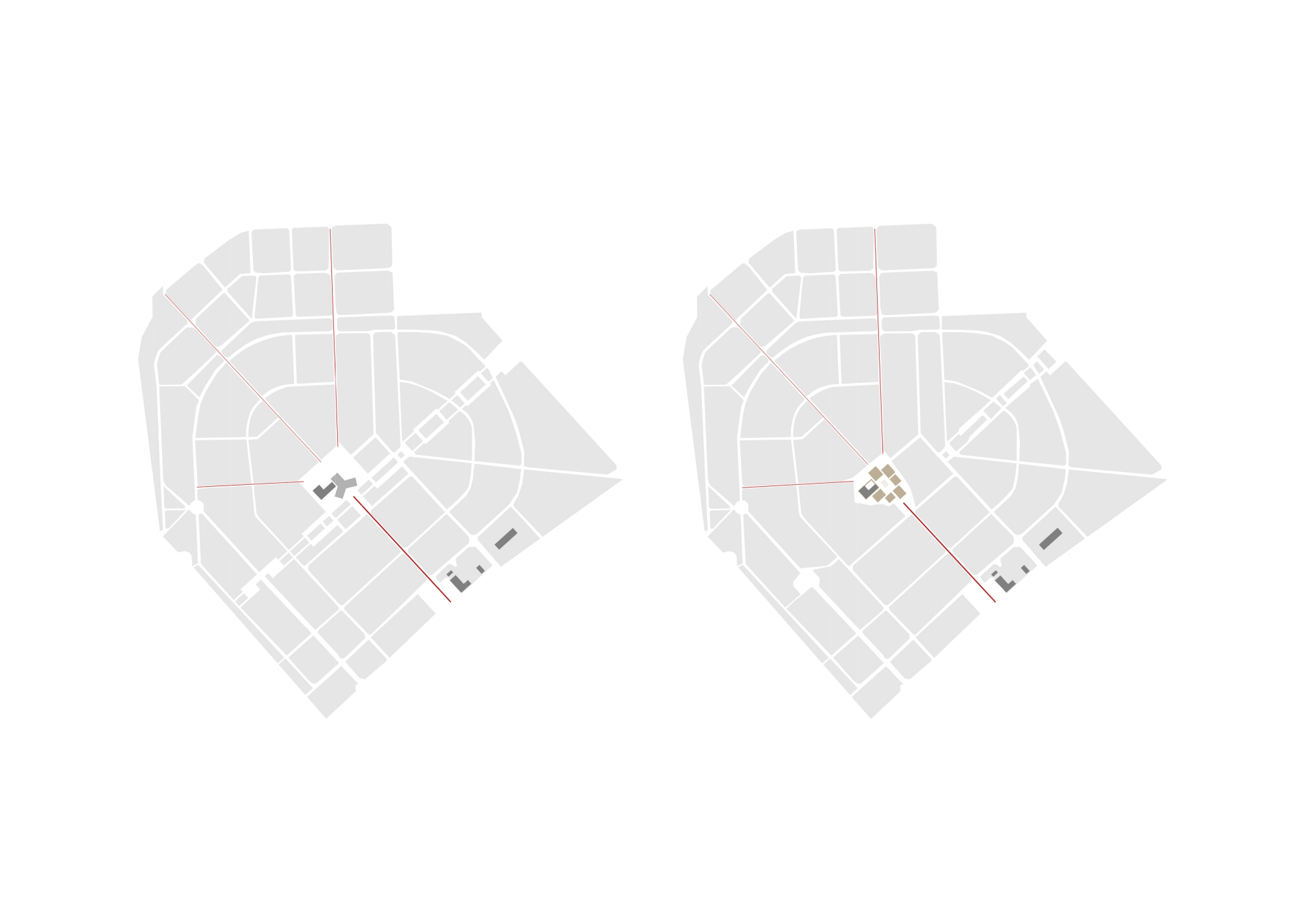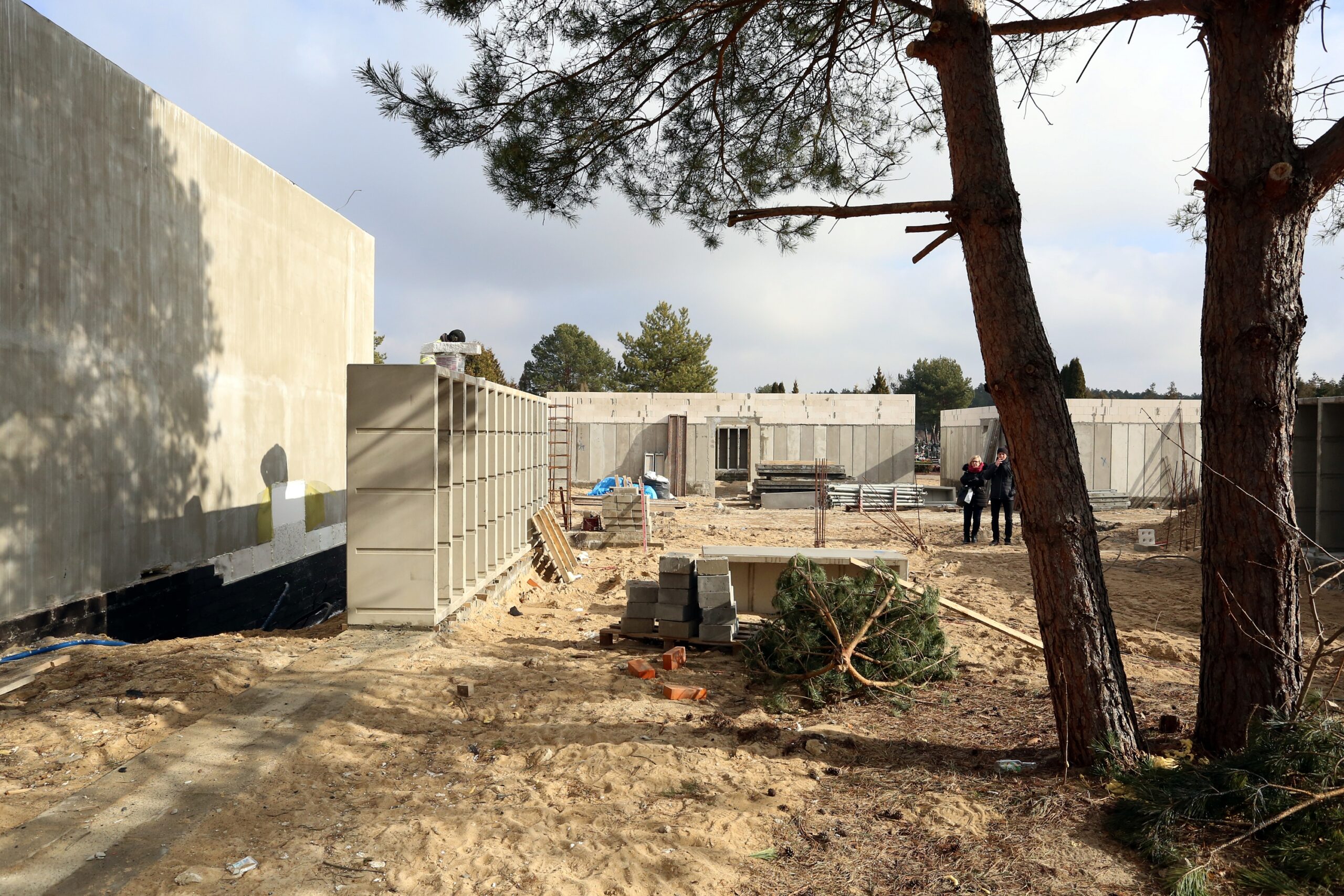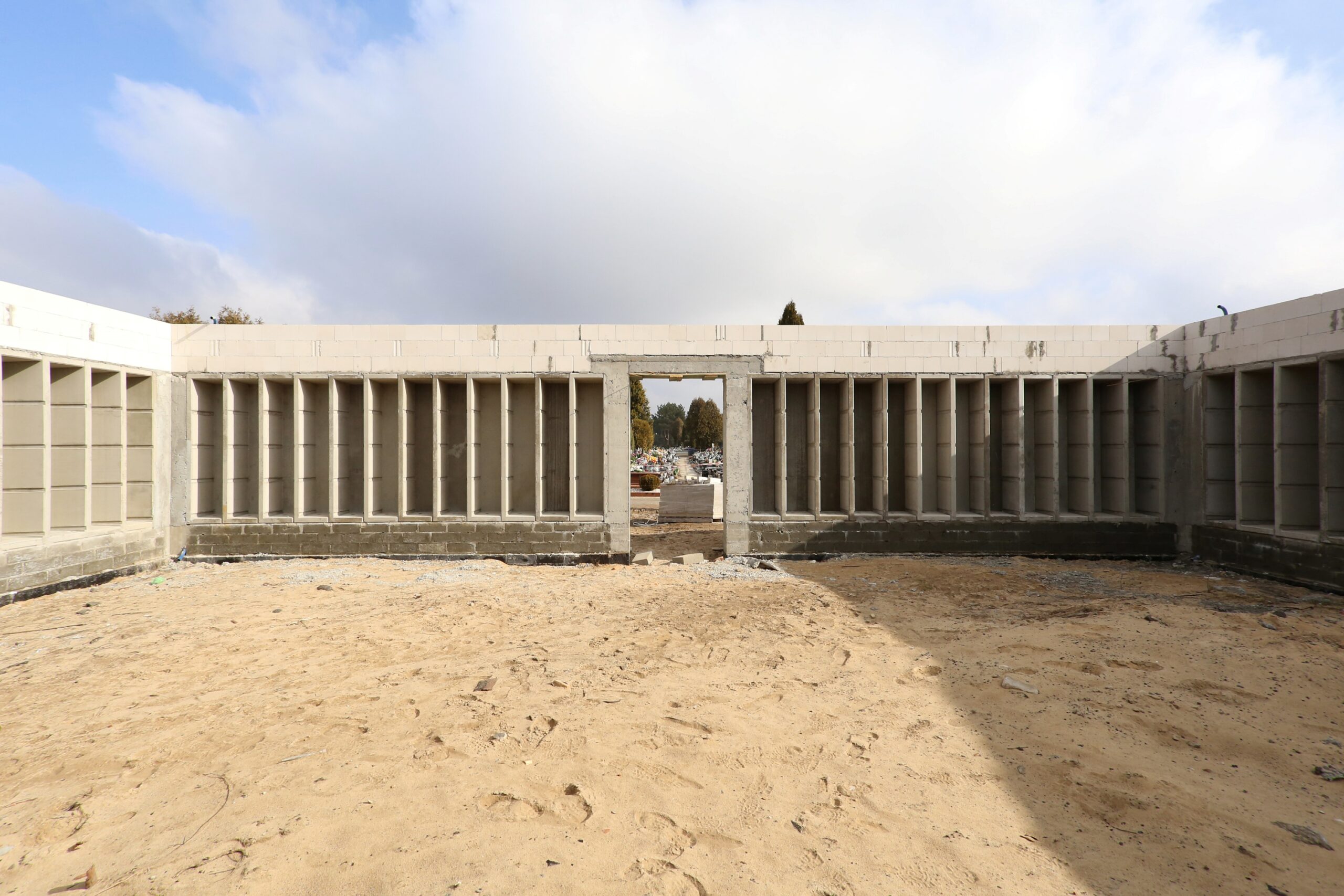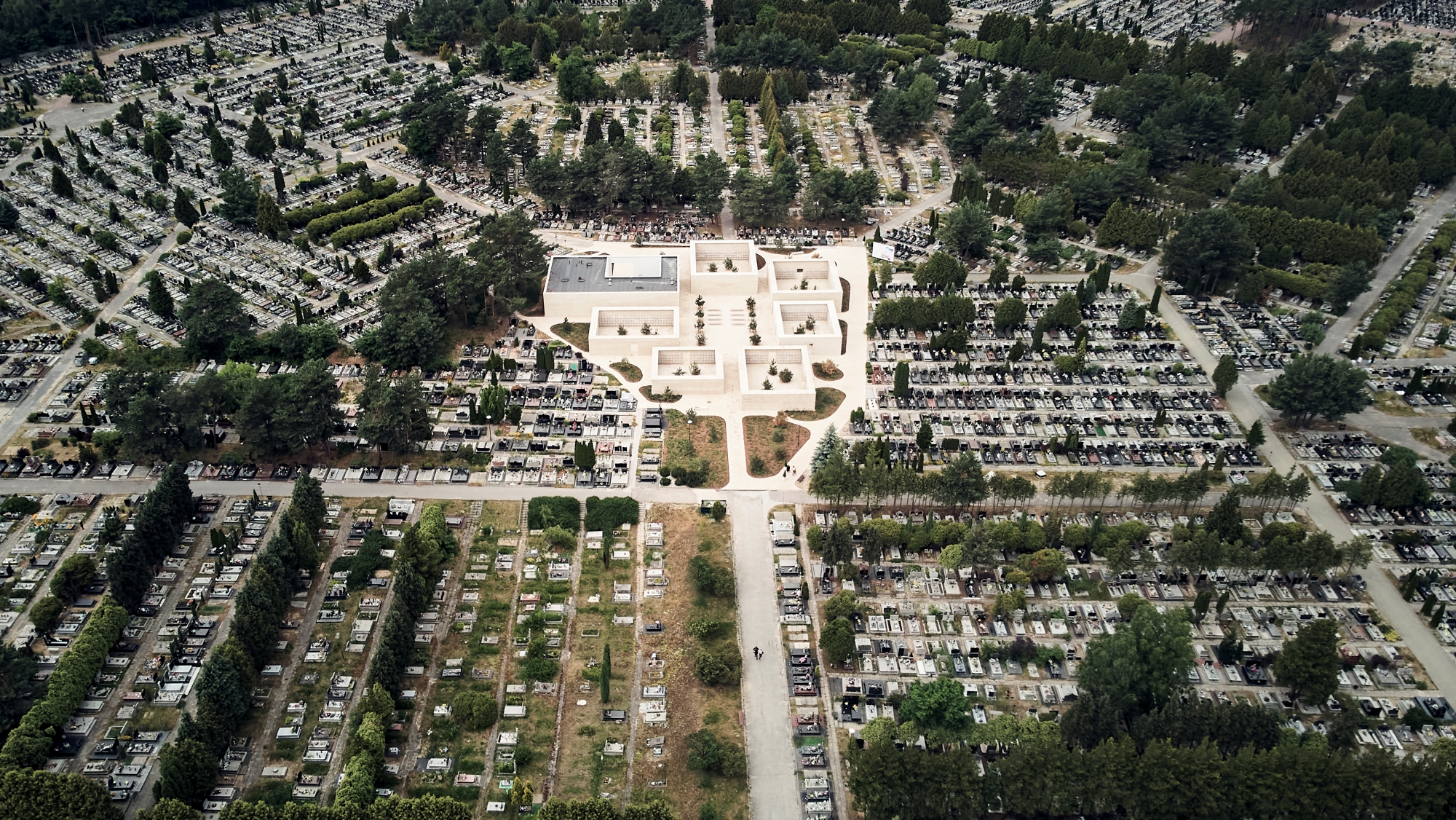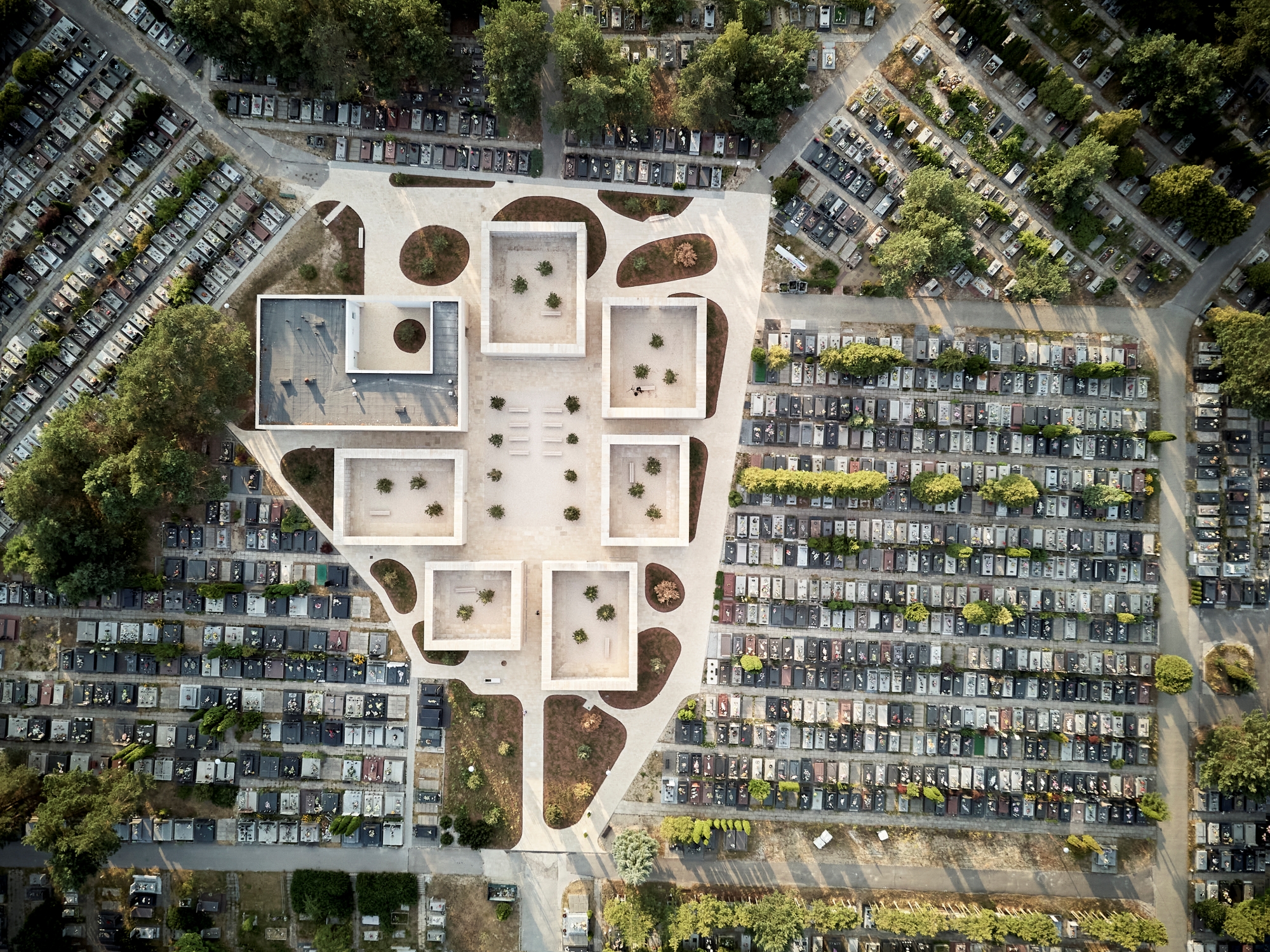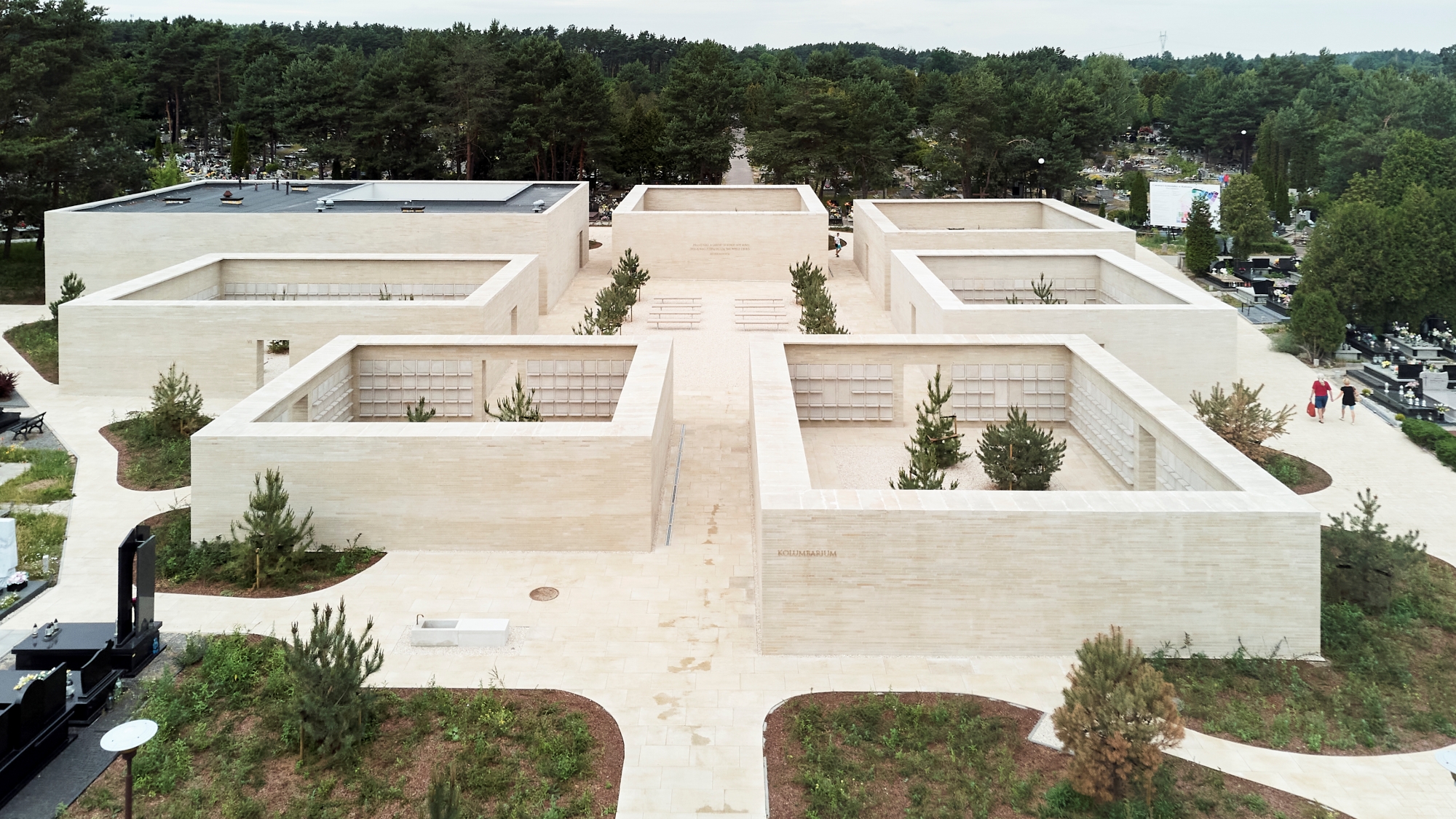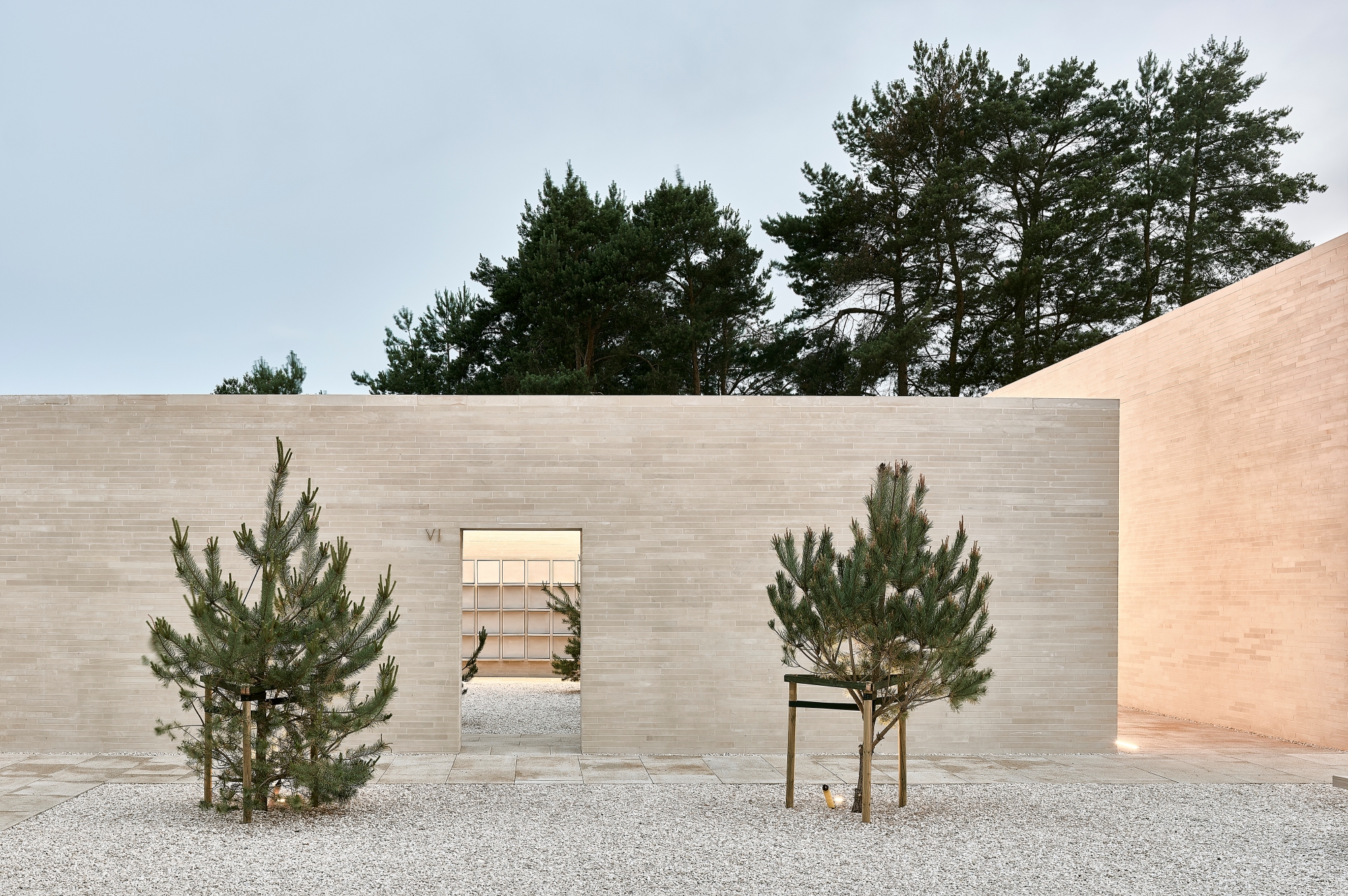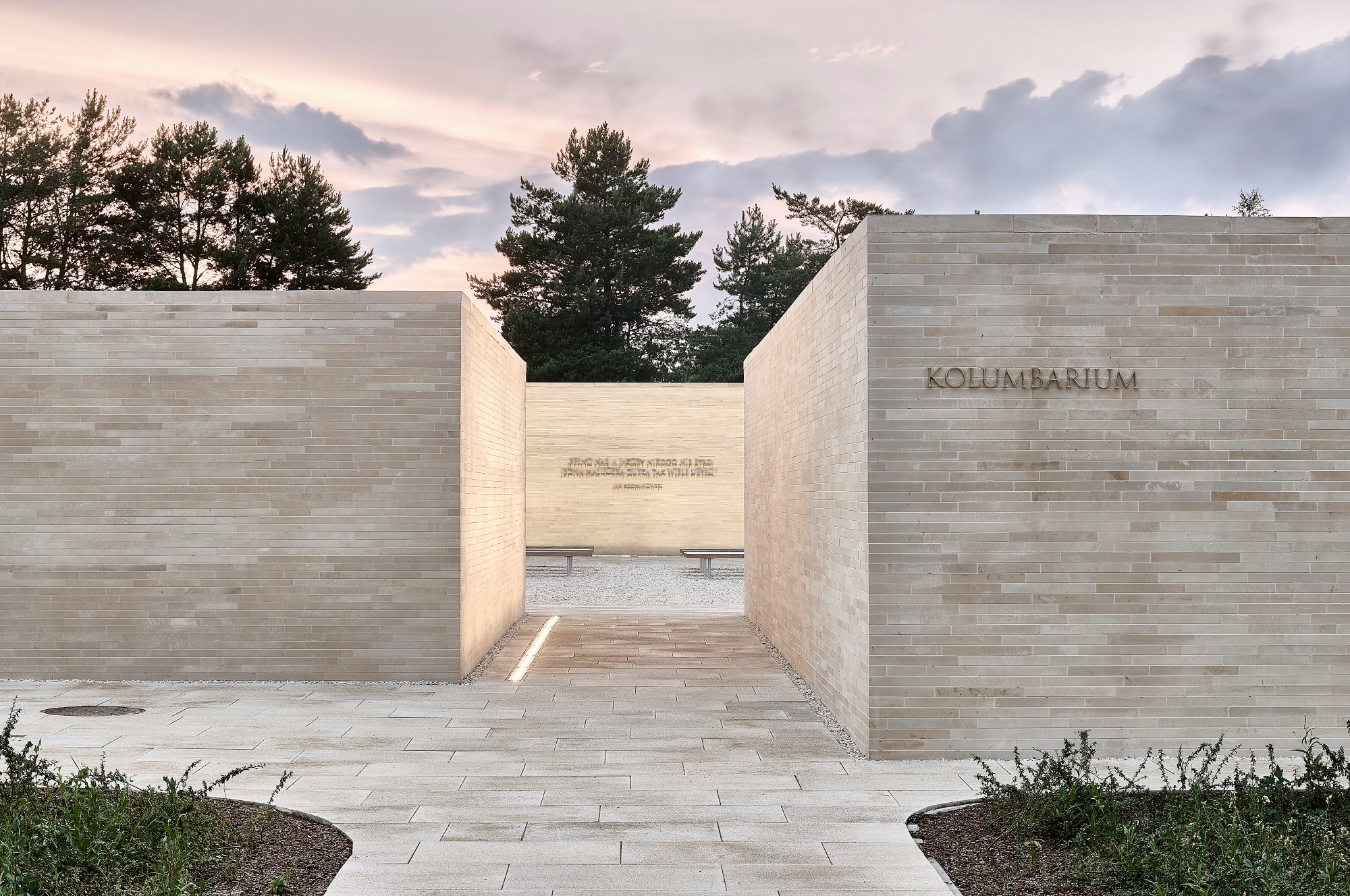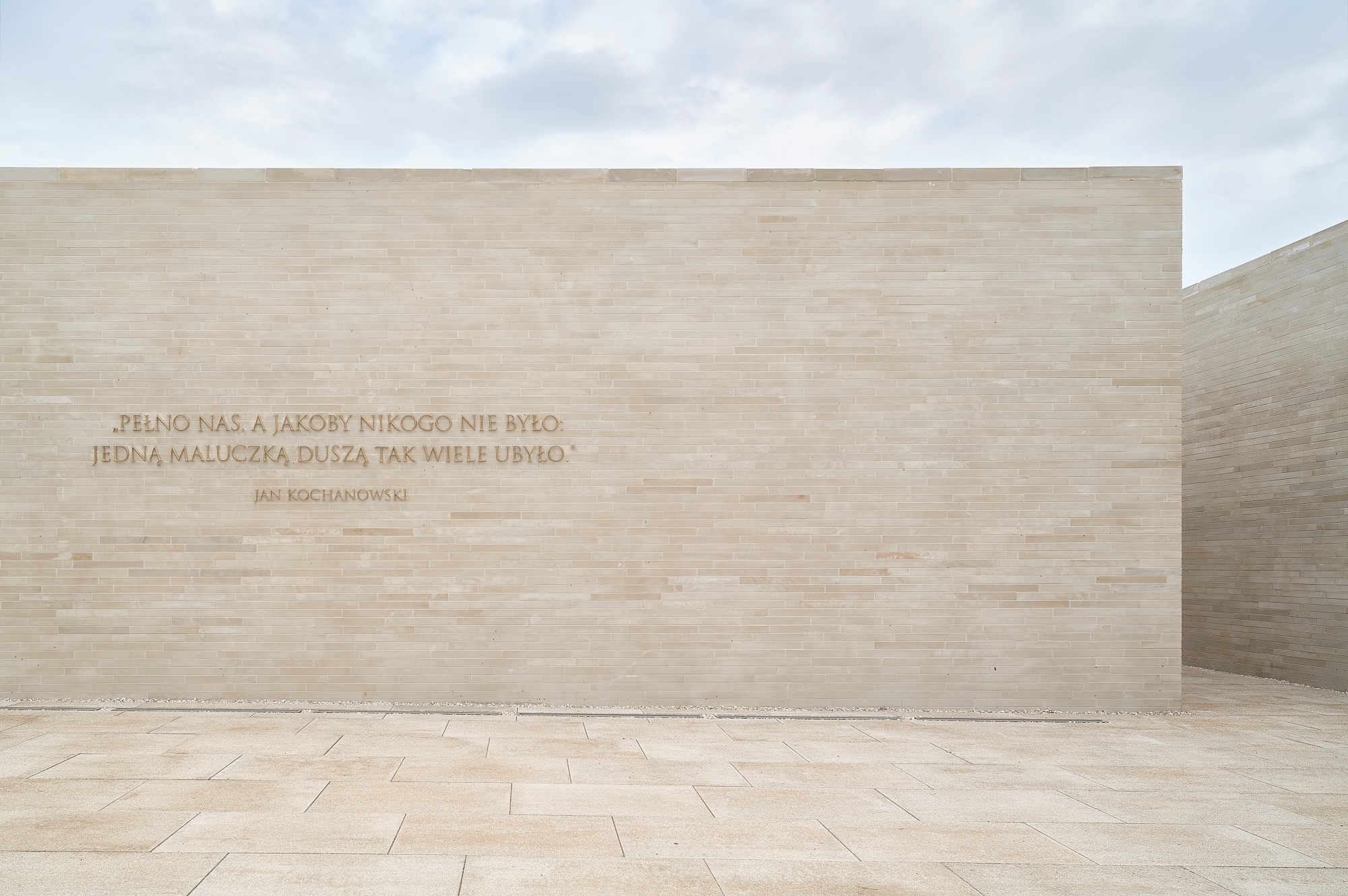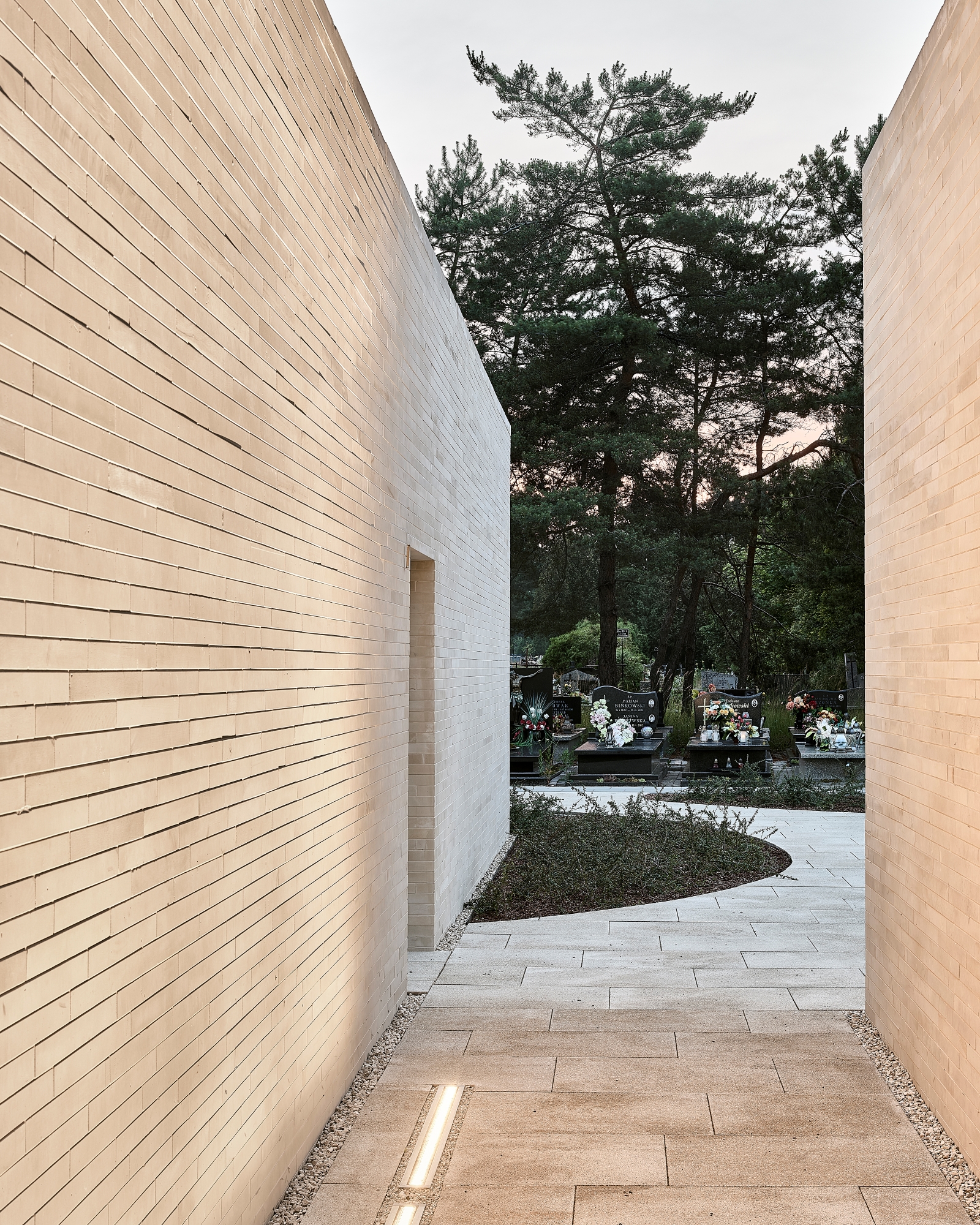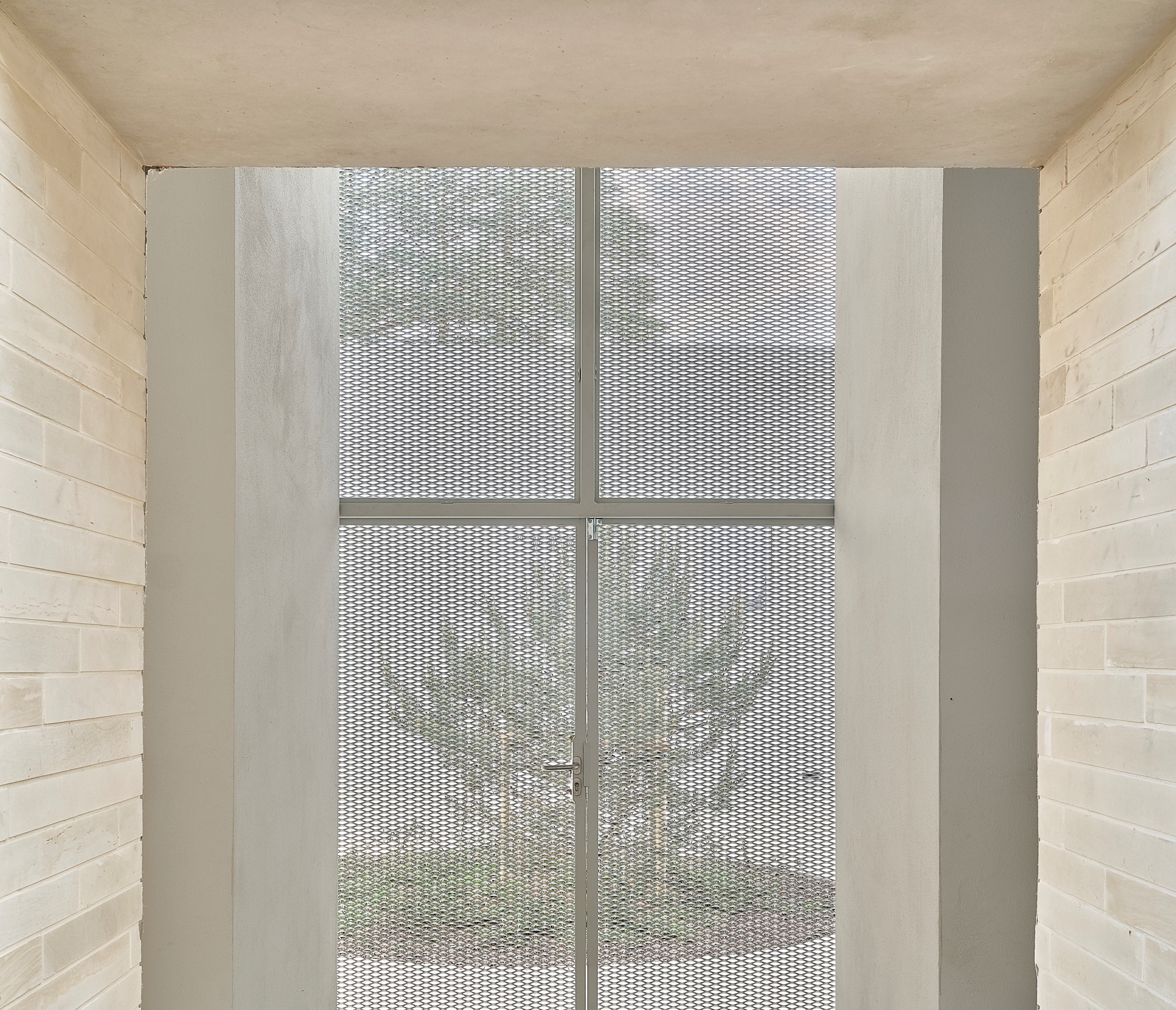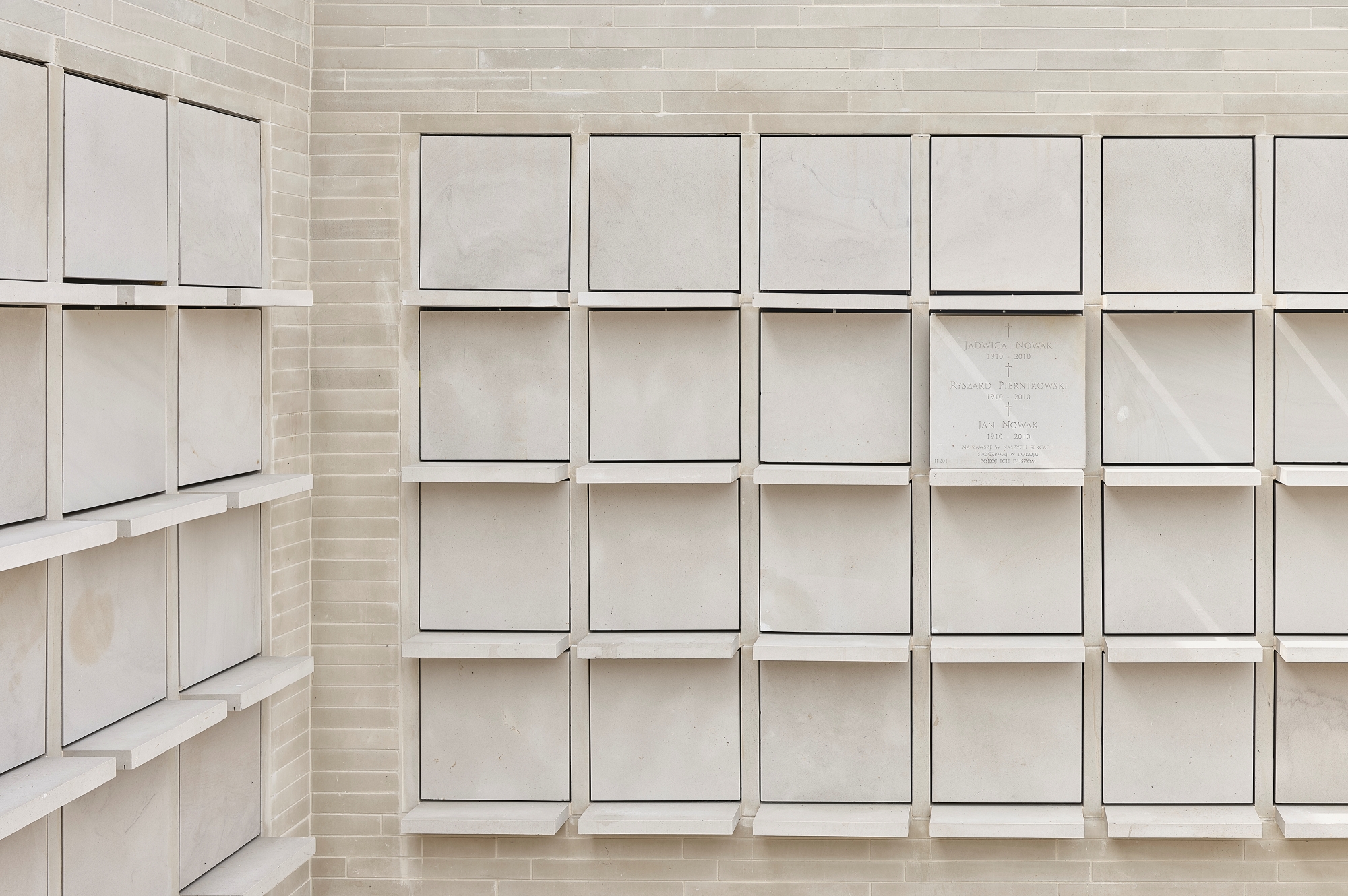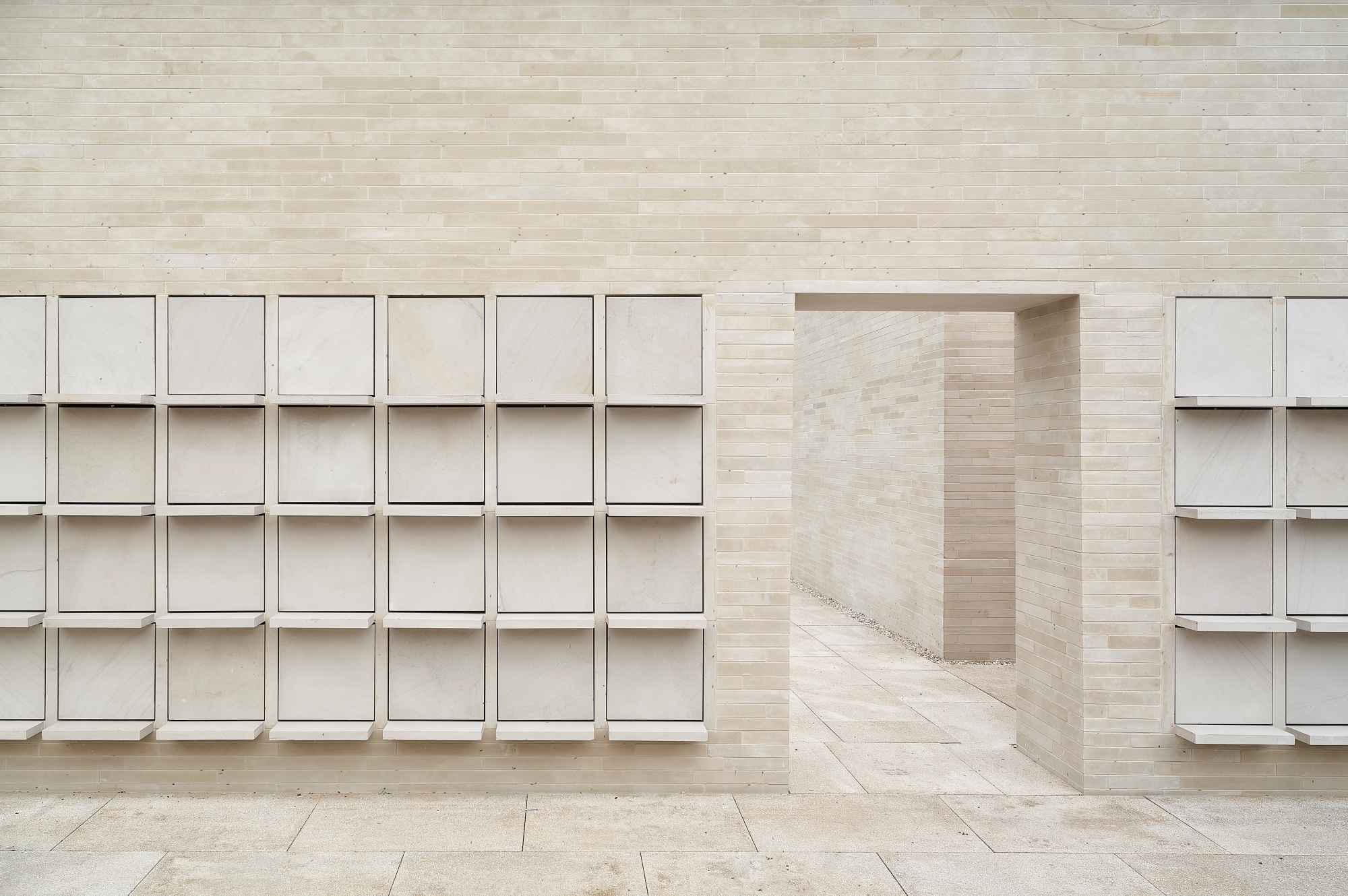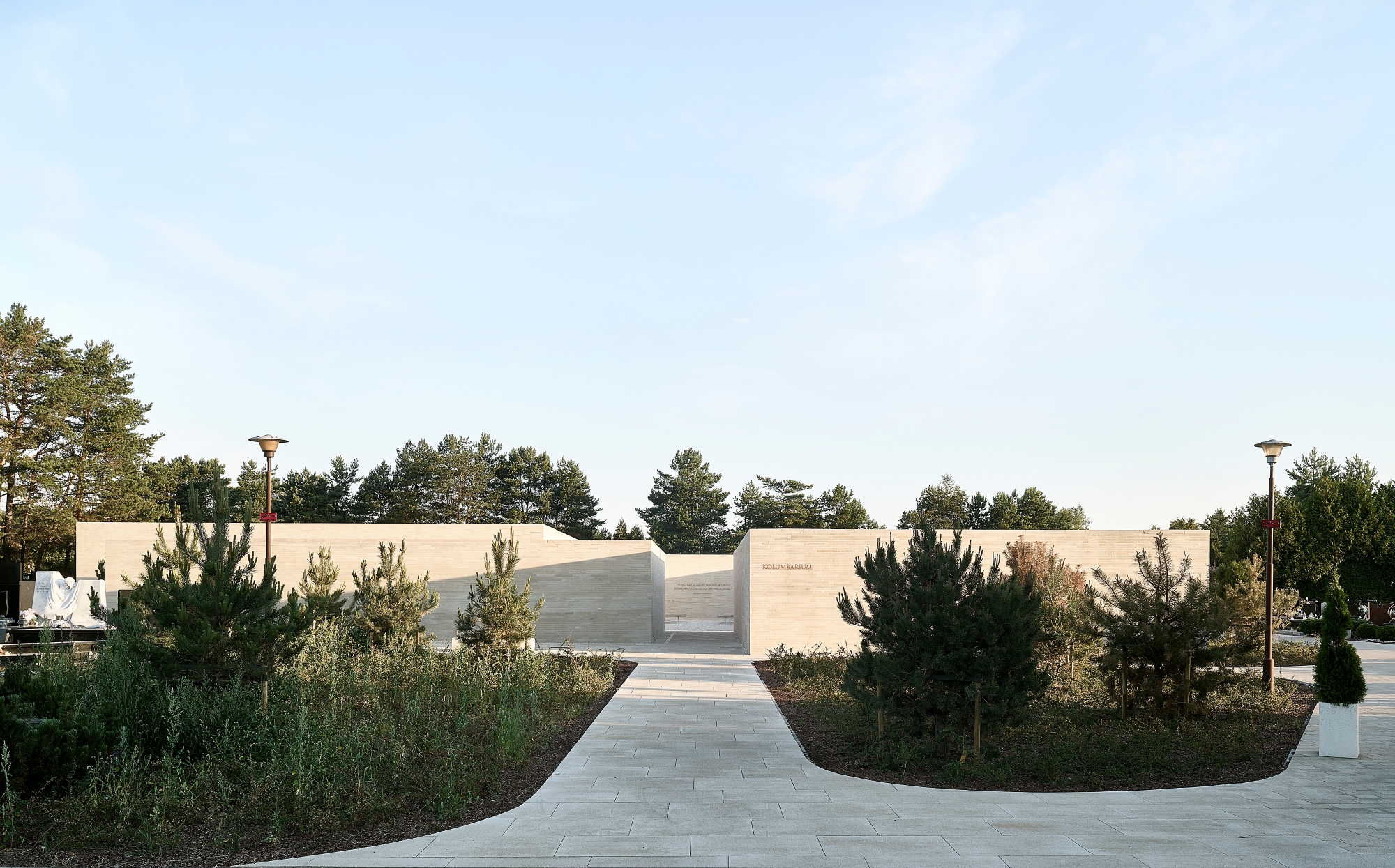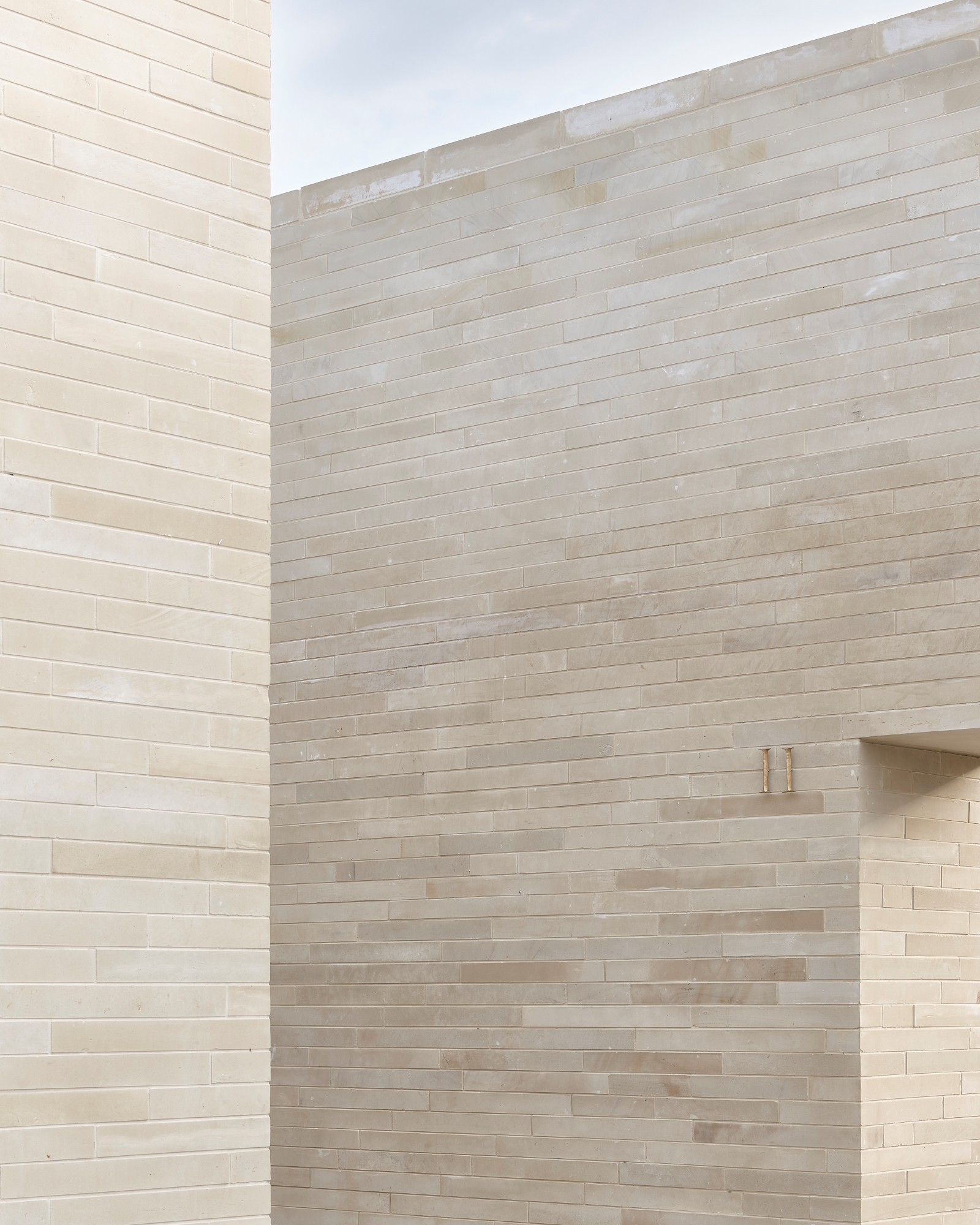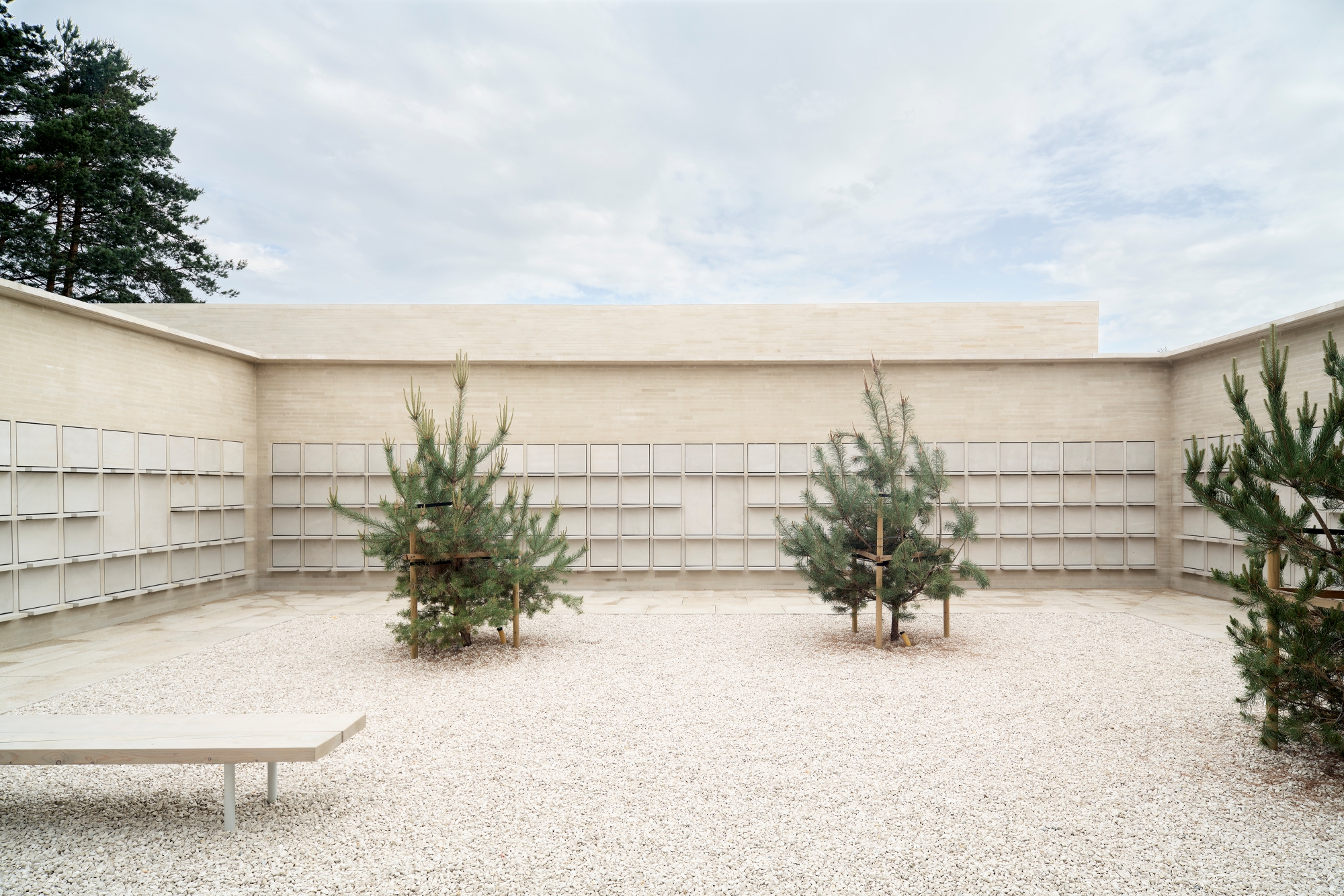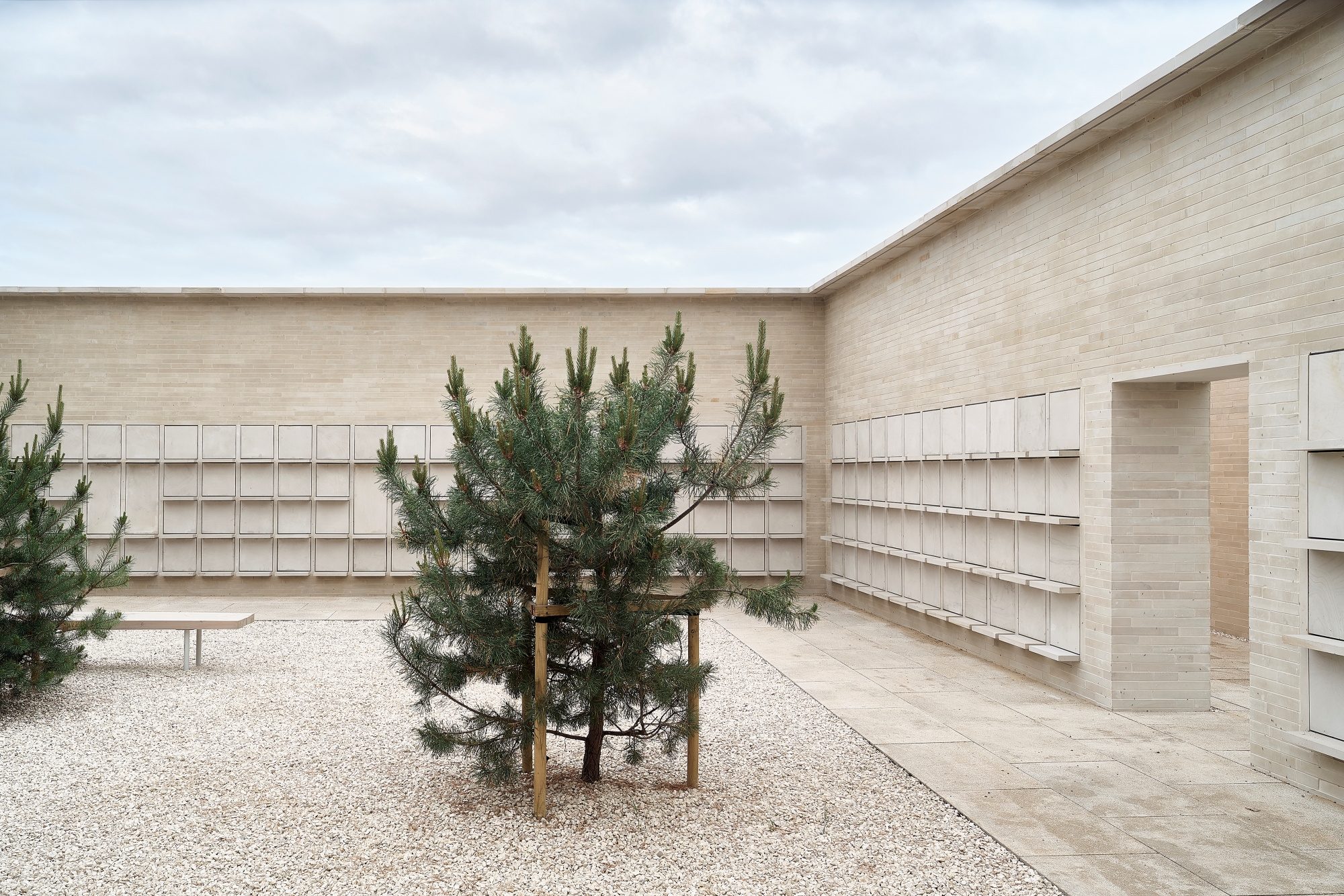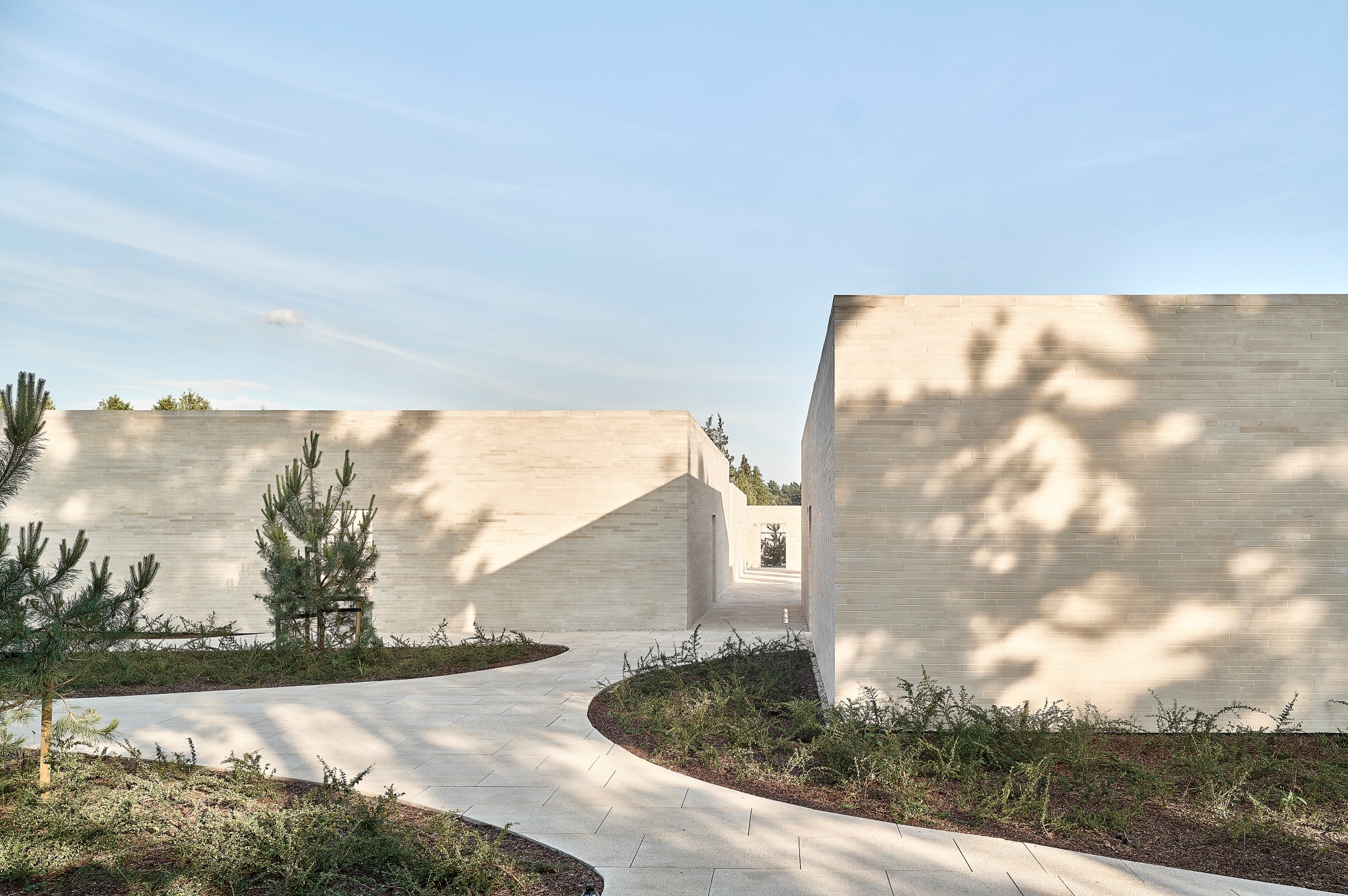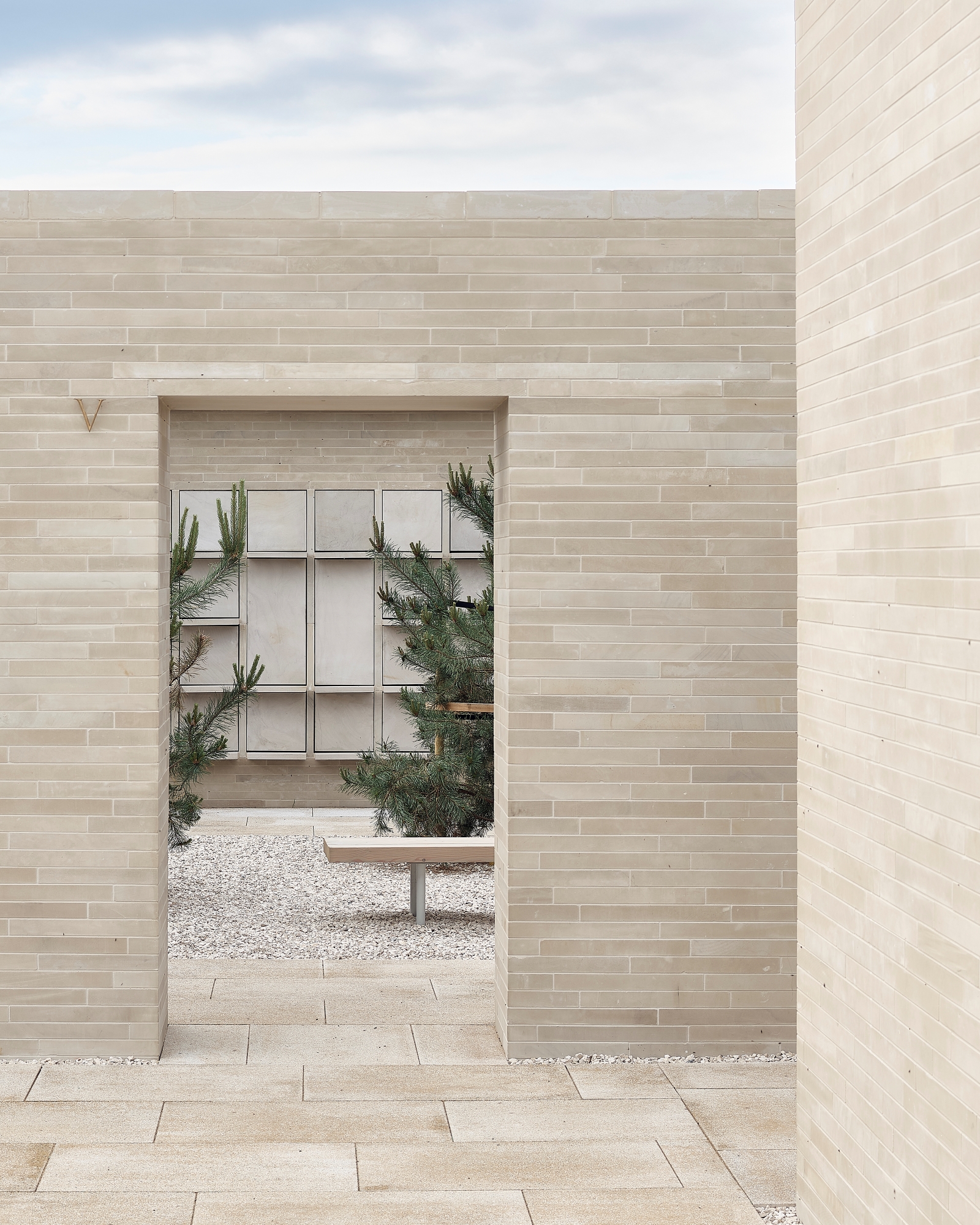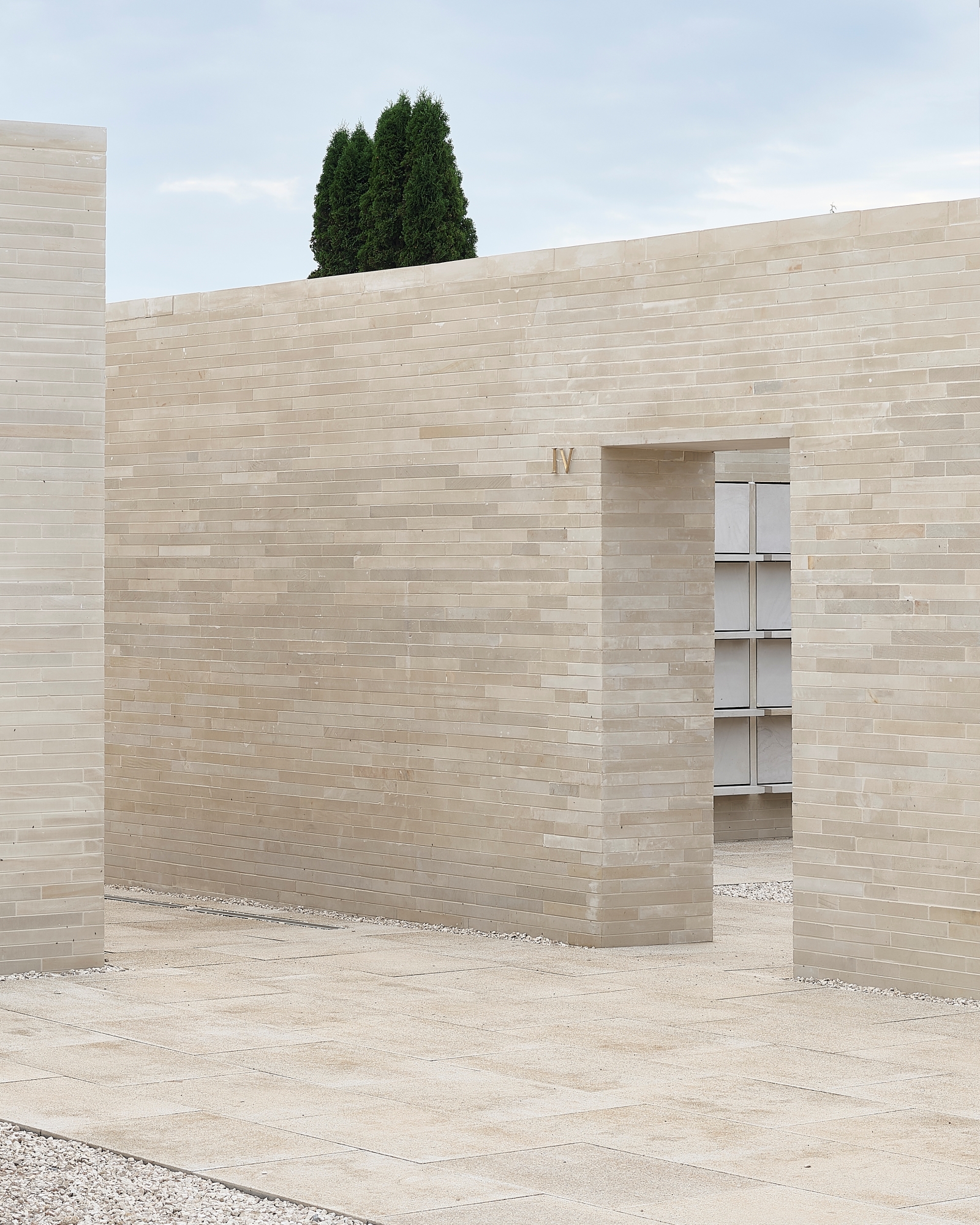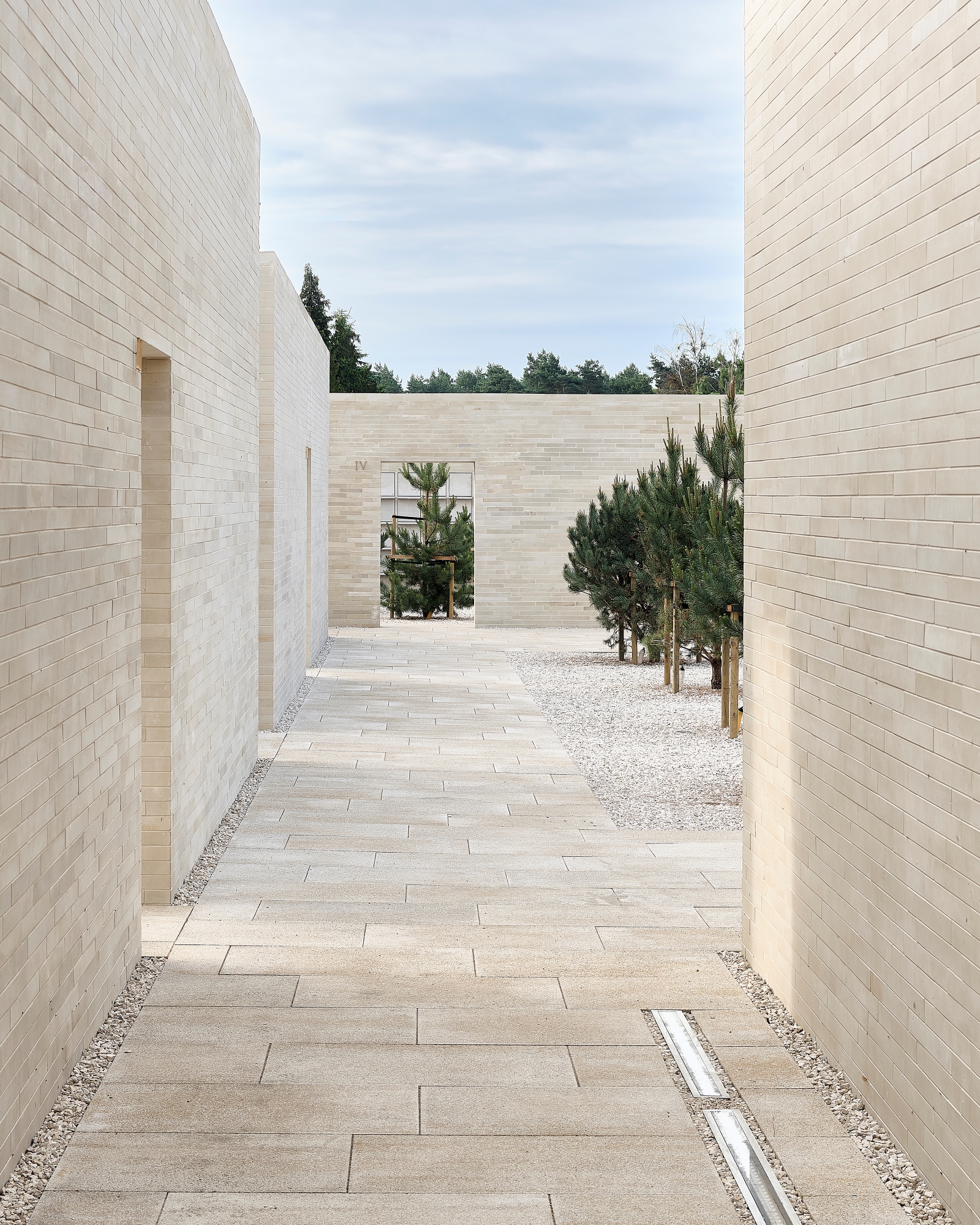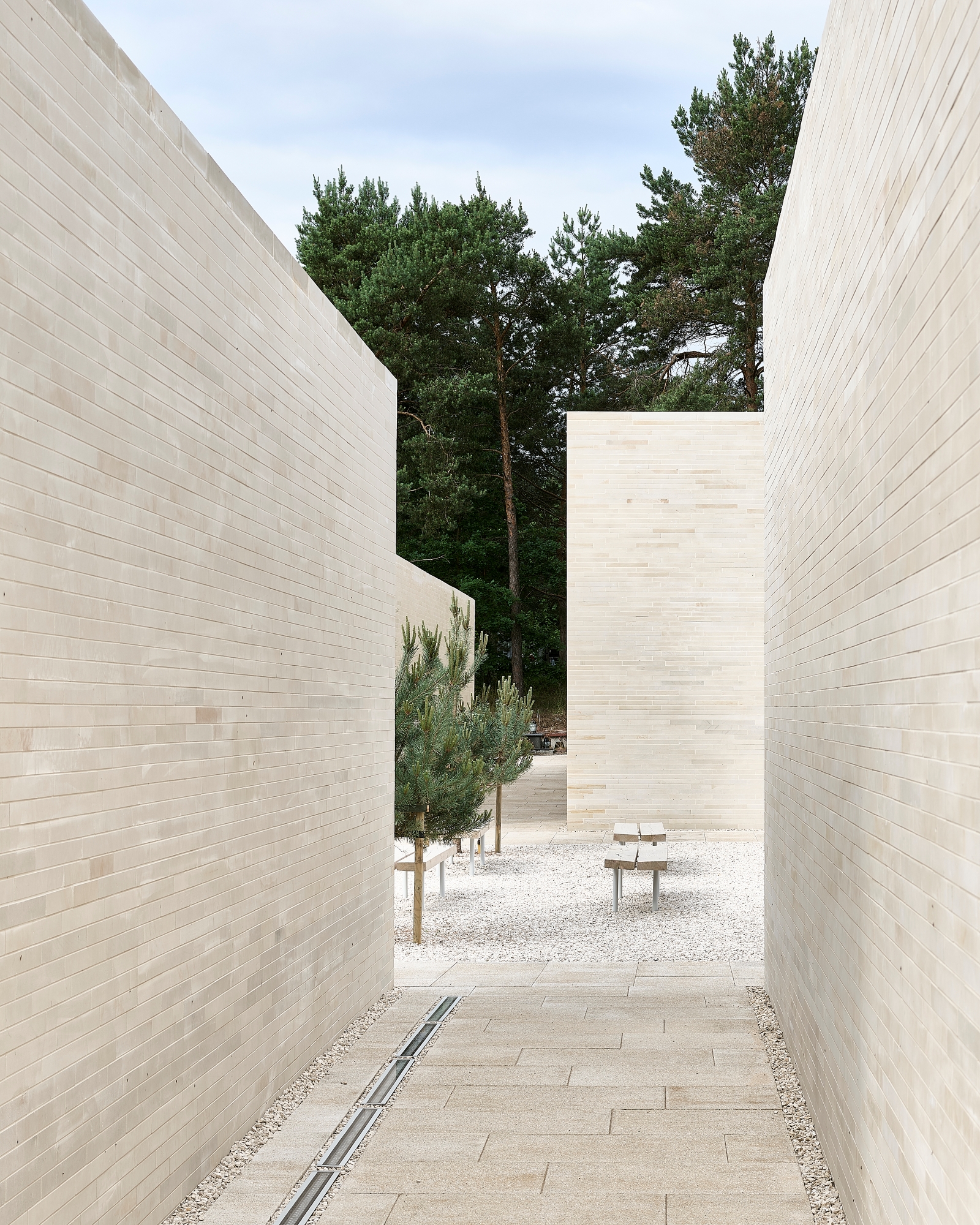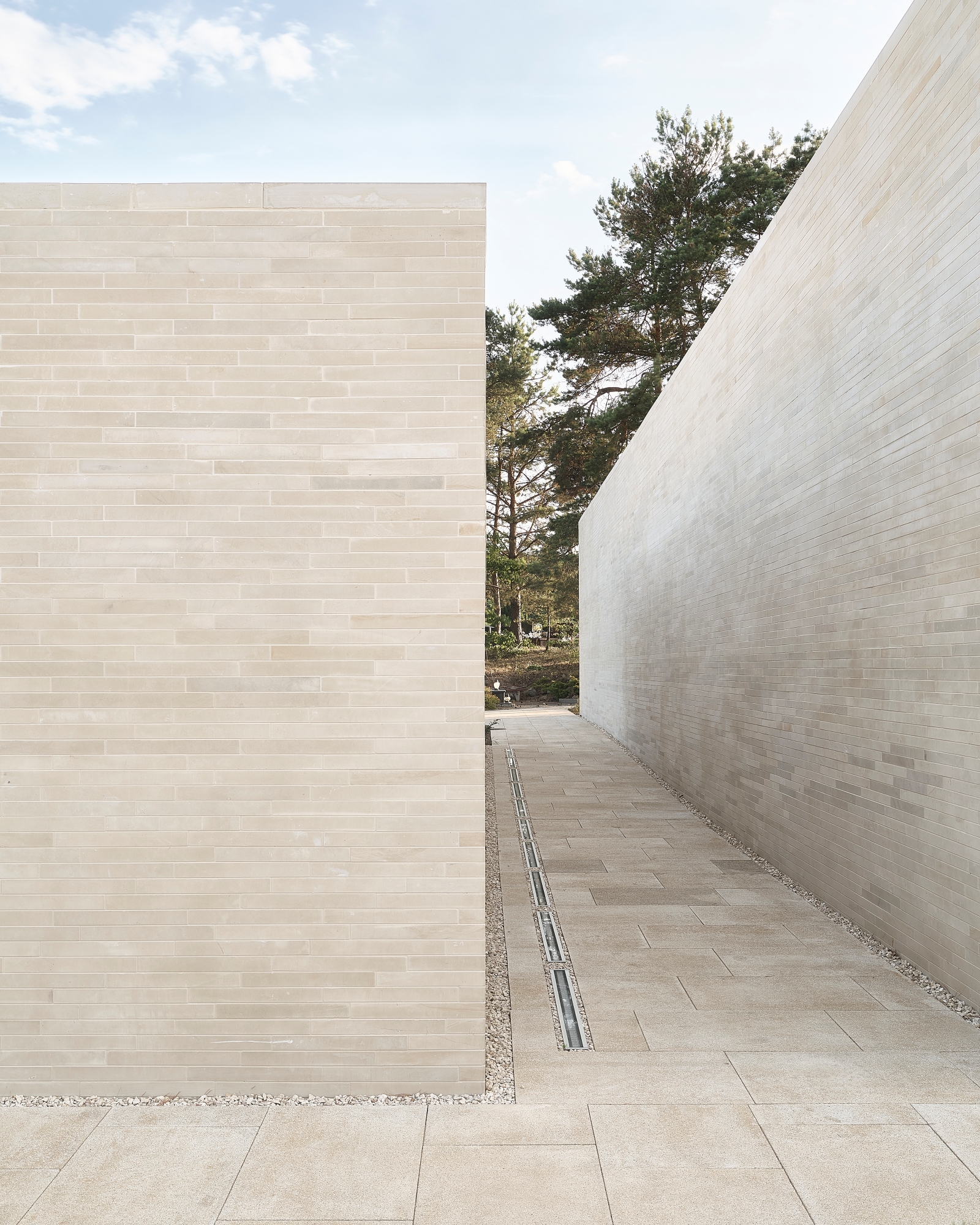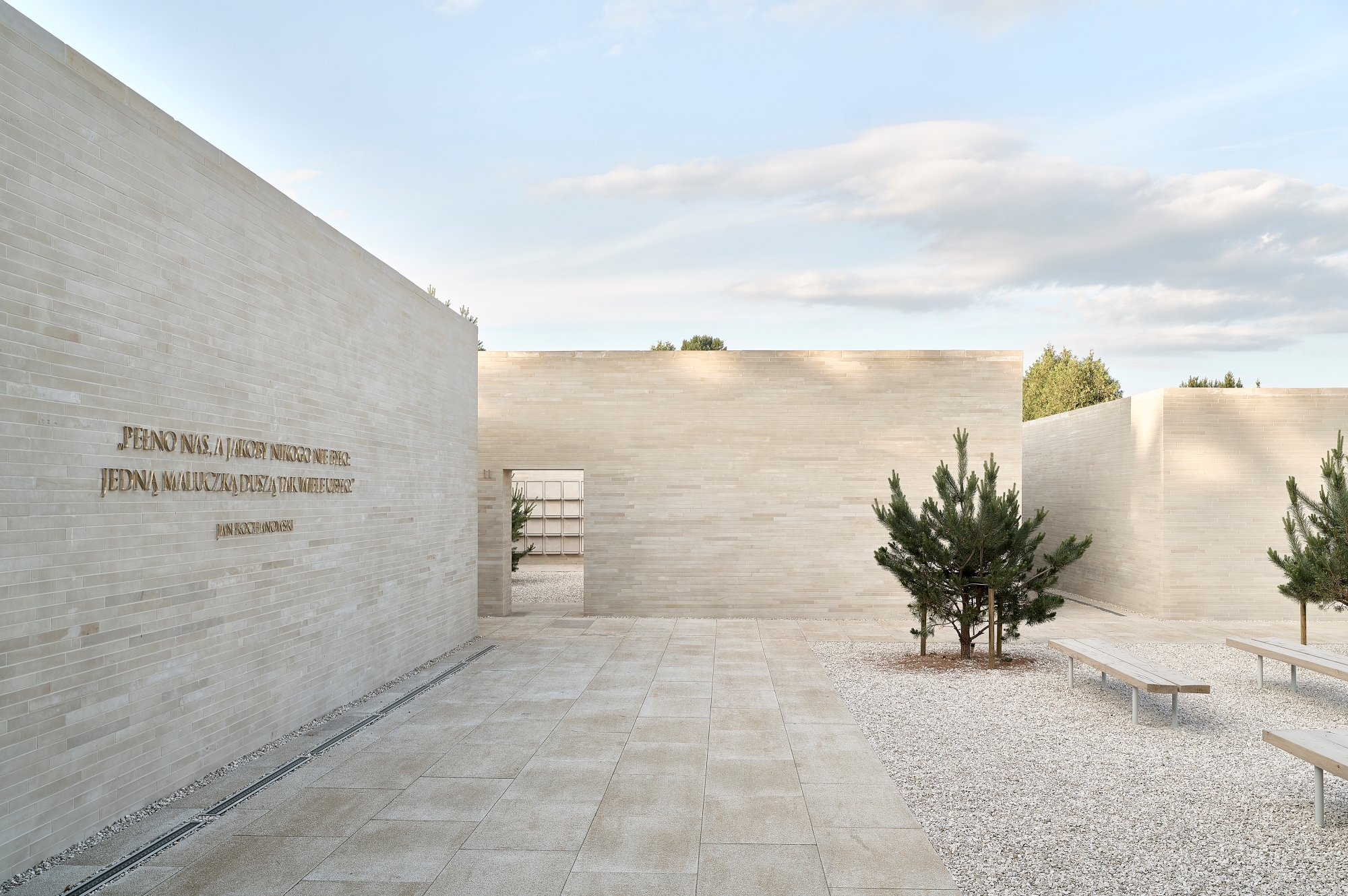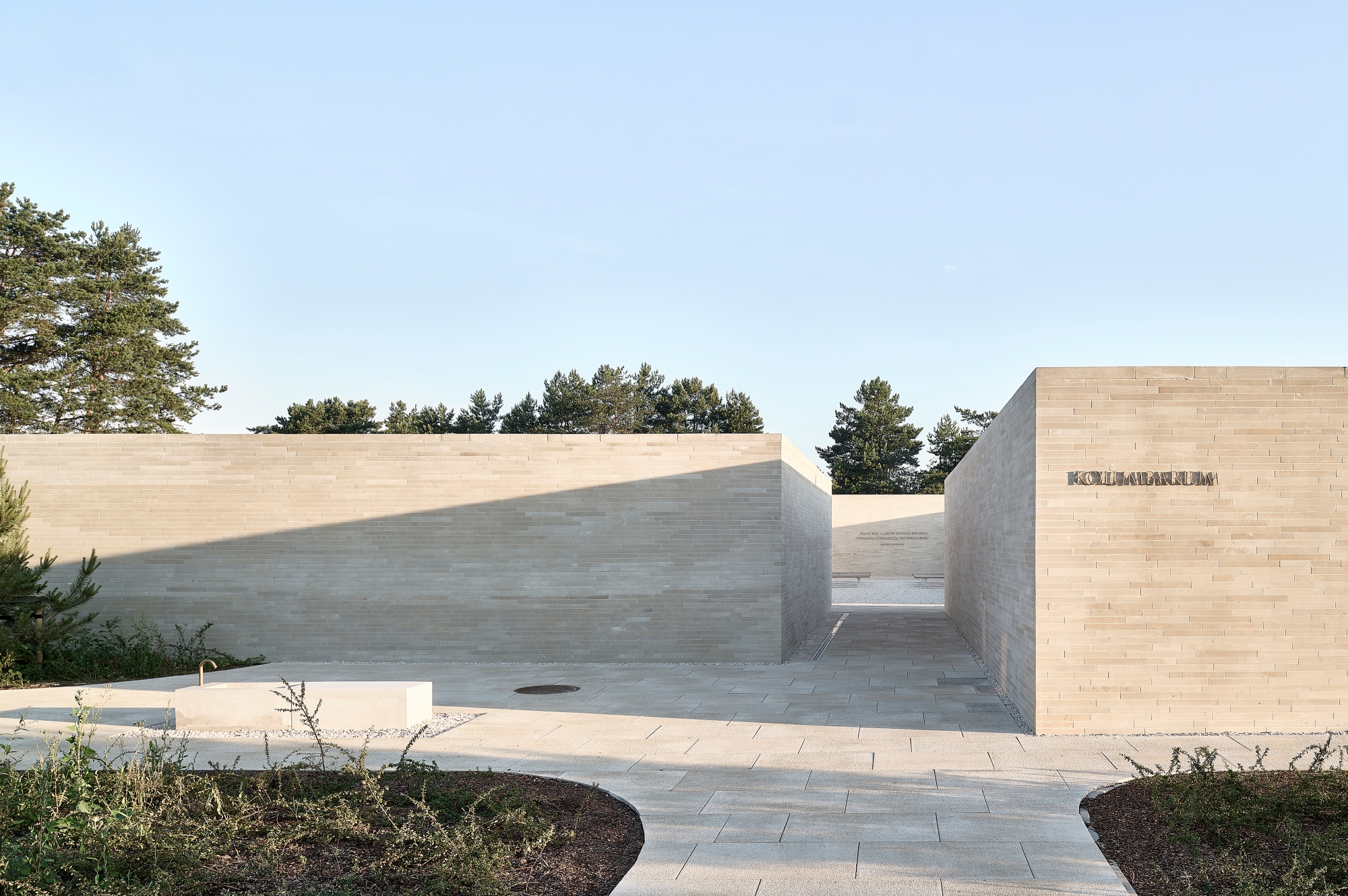The design of the columbarium was created as part of a competition. The task was to design a facility housing 2,000 niches in the centre of the Radom municipal cemetery. Established in 1957, this necropolis with an area of over 30 ha is one of the largest in the country. The first premise of the competition was to contain its growth by building a large columbarium, which would be a more compact form of burial. The second premise was to tidy up the central part of the necropolis, where only the foundations of the planned chapel and pre-burial house had been realised in the 1980s and were to be incorporated into the design as part of the competition.
The burial programme (2,000 niches) was divided into smaller cemetery chambers creating intimate spaces, facilitating concentration and the effortless retrieval of the ashes of a loved one. The columbarium chambers were designed as blocks of varying heights, arranged around a central focus – the ecumenical square. The tallest block is formed by an adapted existing pre-burial house, with a courtyard surrounded by a wall. The central square was located on the site of the unrealised chapel – on the main axis of the cemetery. This intimate space, enclosed by columbarium blocks, has the potential to become a place for future funeral rites and an ecumenical gathering space for the entire cemetery. Greenery plays an important role here, designed in the form of edged fields planted with creeping shrubs. Fifty specimens of Scots pine, a tree species that grows in the neighbouring woods, have also been planted.
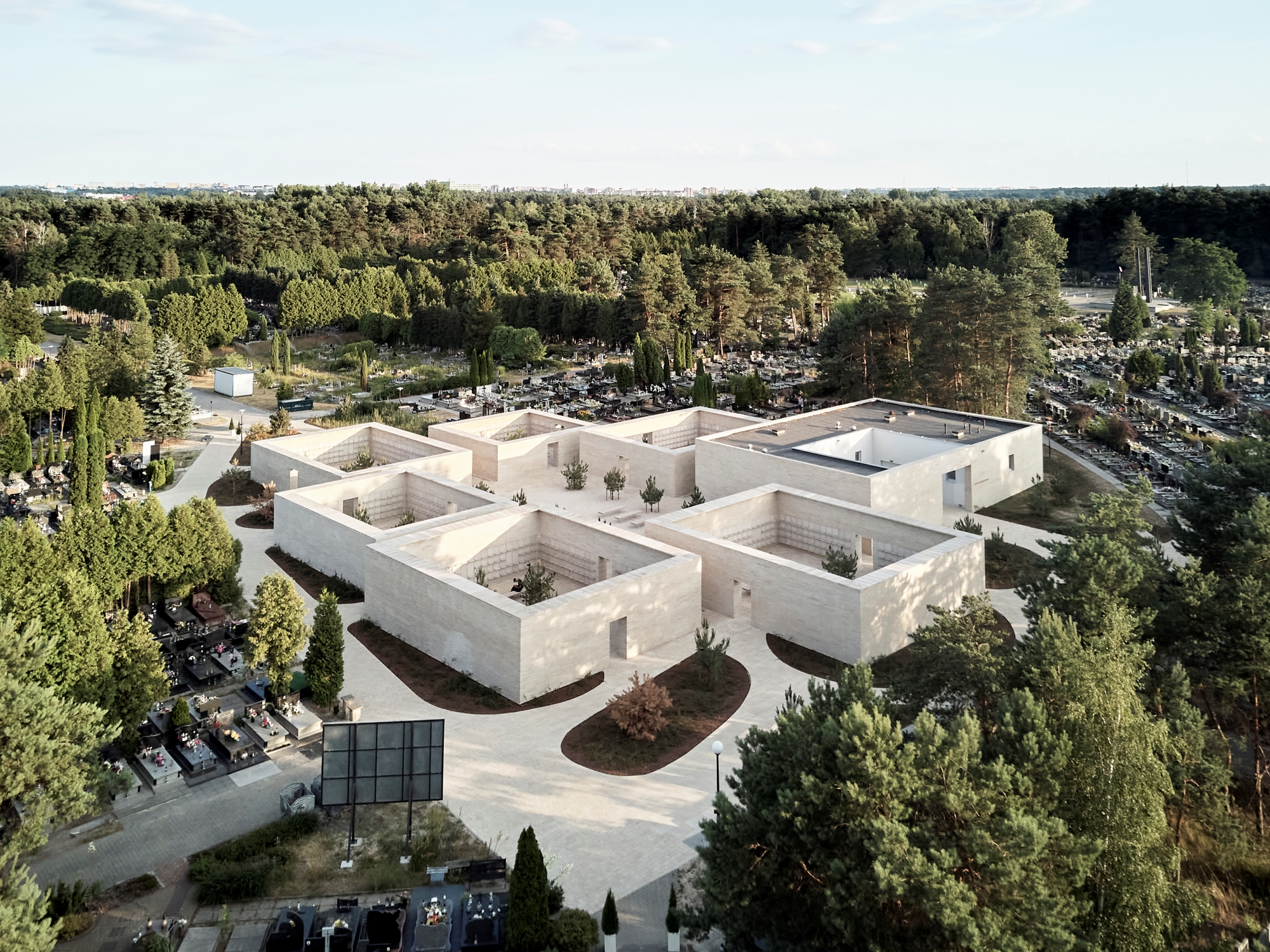
The construction of the columbaria is based on prefabricated concrete elements. These were used to make the niches for the urns, and the basic structure of the building. The prefabricated elements stand on a continuous reinforced concrete footing. Attics of varying heights were built on top of them, so that the columbarium chambers differ not only in the proportion of the courtyards, but also in height. Externally, the entire complex – the chambers and the pre-burial house with their rebuilt façade – were clad with longitudinal sandstone blocks from local quarries. Sandstone was also used to make shelves and plaques with concealed fixtures to open and close the niches. The floor slabs were designed and realised at a Radom-based concrete element manufacturing plant. The areas of the columbarium chambers and the cemetery square were laid with a permeable material – local stone ballast. The whole is complemented by benches made of solid wood, a water intake point and a visual identity made of raw brass, which will patinate over time. A standardised typeface for the identification and burial boards has been introduced.
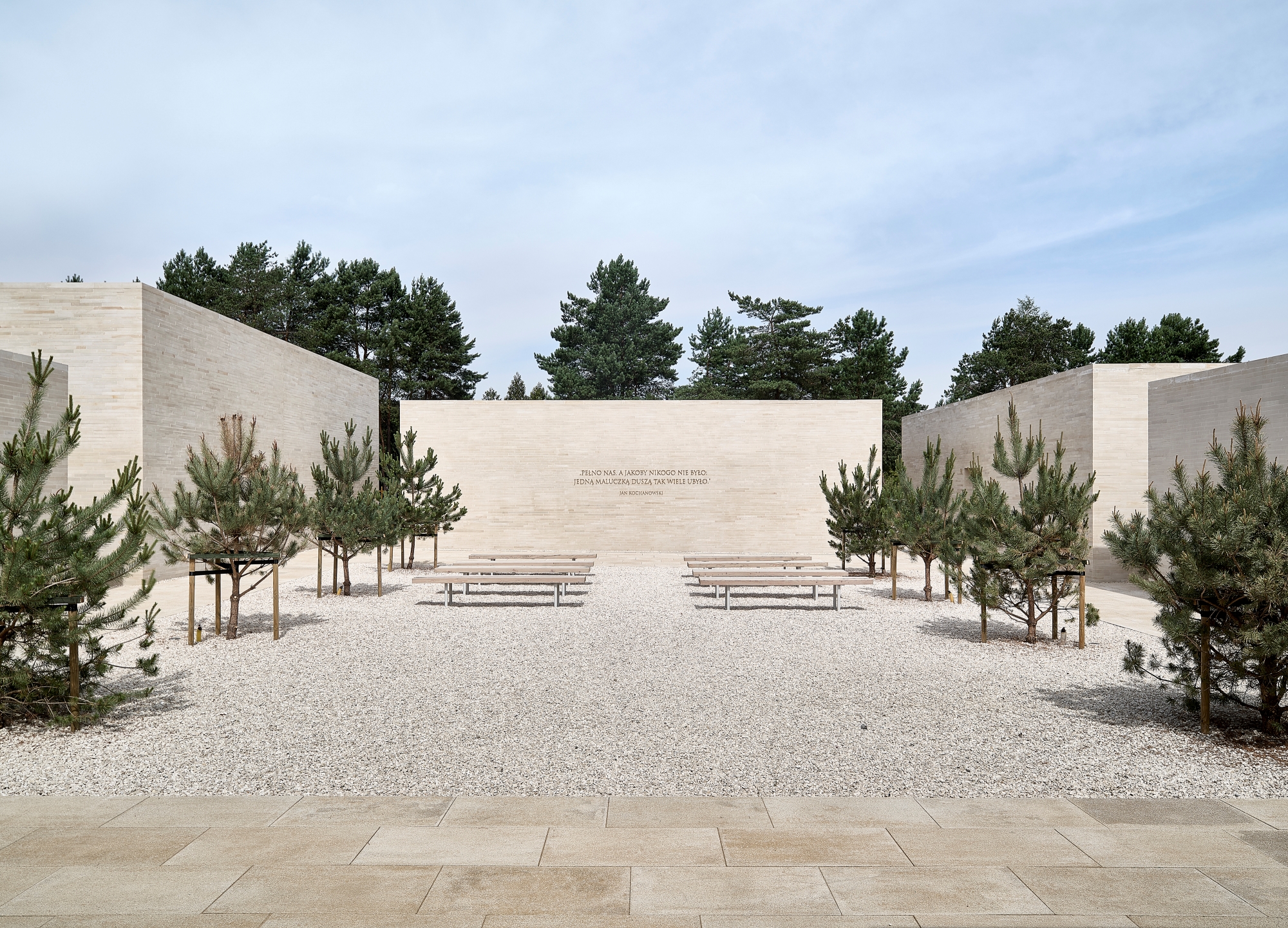
Lighting was an important part of the design. Lines of light in the floor illuminate the passages between the columbarium blocks, bringing out the individual chambers. Inside each chamber, luminaires illuminating the niche arrays were located in the grooves of the gable caps. On the main wall of the square, destined to become a future place of recollection, a verse from the eighth trene by Jan Kochanowski – the greatest Polish Renaissance poet, who lived in Czarnoles, 50 km away – appeared.
“It is hoped that a place of respect for the dead has been created and that the proposed solutions introduce the correct standards related to cremation and the placement of urns with ashes in columbaria. This method of burial is becoming increasingly desirable in the face of an ageing population,” – write the authors of the project from BDR Architects.
Source: BDR Architekci
Read also: Architecture in Poland | Sacred architecture | Stone | Minimalism | whiteMAD on Instagram


